
About UsThe Numismatic Bibliomania Society is a non-profit association devoted to the study and enjoyment of numismatic literature. For more information please see our web site at coinbooks.org SubscriptionsThose wishing to become new E-Sylum subscribers (or wishing to Unsubscribe) can go to the following web page link MembershipThere is a membership application available on the web site Membership Application To join, print the application and return it with your check to the address printed on the application. Print/Digital membership is $40 to addresses in the U.S., and $60 elsewhere. A digital-only membership is available for $25. For those without web access, write to: Charles Heck, Treasurer
AsylumFor Asylum mailing address changes and other membership questions, contact Terry at this email address: terrywhite5475@yahoo.com SubmissionsTo submit items for publication in The E-Sylum, write to the Editor at this address: whomren@gmail.com BUY THE BOOK BEFORE THE COIN |
- WAYNE'S WORDS: THE E-SYLUM JUNE 5, 2019
- INVASION OF CHAMPAIGN: SUNDAY, AUGUST 18, 2019
- WORKMAN BOOKS JUNE 15, 2019 SALE HIGHLIGHTS
- CHICAGO COIN CLUB CENTENNIAL RED BOOK
- JOURNAL OF EARLY AMERICAN NUMISMATICS JUNE 2019
- COLLECTING BARBER SILVER COINS
- BOOK REVIEW: CURIOUS CURRENCY, 2ND EDITION
- ANS ANNOUNCES HELLENISTIC ROYAL COINAGES SITE
- NEW BOOK: GREAT AMERICANS HALL OF FAME MEDALS
- VIDEO: COIN WORLD REPORTER CHRIS BULFINCH
- ON NUMISMATIC DOCTORING AND CONSERVATION
- NOTES FROM E-SYLUM READERS: JUNE 2, 2019
- MORE ON THE DANIEL W. VALENTINE MEDAL
- LOCAL EXCHANGE TRADING SYSTEM
- VOCABULARY TERM: CORROSION
- ROBERT LEE DEITRICK (1870-1938)
- CHICAGO HALL OF FAME INDUCTS LEE F. HEWITT
- IAPN PRESIDENT DANIEL FRANK SEDWICK
- HARVEY STACK'S NUMISMATIC FAMILY, PART 45
- THE MASSACHUSETTS PINE TREE COPPER
- DAVE WNUCK'S COIN MARKET PREDICTIONS
- WHEN INSTITUTIONS FAIL: PART I
- AMERICA: A NATION OF CLUBS
- NUMISMATIC NUGGETS: JUNE 2, 2019
- ARCHIVES INTERNATIONAL AUCTION #53 HIGHLIGHTS
- GIRL FINDS ABBASID DYNASTY GOLD DINAR
- COIN HOARD OF ALFRED THE GREAT AND CEOLWULF II
- THE 1899 PANAY REVOLUTIONARY CENTAVO
- 1966 VIP UNCIRCULATED COIN SET MYSTERY
- LADY SPY AWARDED OSS CONGRESSIONAL GOLD MEDAL
- ISKOWITZ MEDAL DESIGN HONORS MICKEY MARCUS
- ENGELHARD WEST COAST SILVER BARS
- ASBURY PARK 1882 GOLD CERTIFICATES
- THE NEWEST EURO NOTES
- LOOSE CHANGE: JUNE 2, 2019
- SPRUCE TIP MONEY OF SKAGWAY, ALASKA,
Click here to access the complete archive
To comment or submit articles, reply to whomren@gmail.com
Content presented in The E-Sylum is not necessarily researched or independently fact-checked, and views expressed do not necessarily represent those of the Numismatic Bibliomania Society.
WAYNE'S WORDS: THE E-SYLUM JUNE 5, 2019
 This week we open with some NBS news, highlights from the Workman literature sale, a special edition Redbook, a
new issue of the Journal of American Numismatics, a book review and a new web site from ANS.
This week we open with some NBS news, highlights from the Workman literature sale, a special edition Redbook, a
new issue of the Journal of American Numismatics, a book review and a new web site from ANS.
Other topics this week include a new book published on the Newman Numismatic Portal, numismatic doctoring and conservation, the Local Exchange Trading System, dealer R. L. Deitrick, publisher Lee F. Hewitt, the Massachusetts Pine Tree copper, coin market predictions, coin finds, the OSS Congressional Gold medal, and the newest Euro notes.
To learn more about the Invasion of Champaign, New Rubber Lady Family Varieties, Barber coinage, the Hall of Fame for Great Americans medals, Civil War cardboard tokens, numisnautists, the Kiau Chau German Occupation satirical medal, Kansas 1907 Panic Scrip, the Panay revolutionary centavo, and the origin of the dollar symbol, read on. Have a great week, everyone!
Wayne Homren
Editor, The E-Sylum
INVASION OF CHAMPAIGN: SUNDAY, AUGUST 18, 2019
One of the most celebrated numismatic literature events of recent decades was the 1988 “Invasion of Louisville”, where bibliophiles descended upon the library of Armand Champa of Louisville, KY. At the upcoming 2019 American Numismatic Association World's Fair of Money in Rosemont, IL there will be another such memorable event - a visit to the numismatic library of Dan Hamelberg in Champaign, IL. NBS Vice president Len Augsburger provided this announcement. -Editor
The Invasion of Champaign – Mark Your Calendar

Armand Champa at the “Invasion of Louisville,” 1988
The Numismatic Bibliomania Society will “invade” Champaign for a tour of the Dan Hamelberg library on Sunday, August 18. For NBS members attending the ANA Convention, transportation will be provided, leaving Rosemont at 9AM on August 18. It will be about a 2.5 hour drive, more details will be provided as we get closer. If you wish to attend, simply send an email to Len Augsburger (leonard_augsburger@hotmail.com) indicating your intention to do so. If you will NOT be using NBS-provided transportation, please also note that.
Rumors surrounding the depth and breadth of the Hamelberg library have been circulating for years – here is your change to investigate first hand! Finally, if there is a particular item from the Hamelberg library you wish to see, do note that, and we will do our best to accommodate your request, as it may be easier to locate an item in advance of the tour.
To read the earlier E-Sylum article, see:
HAMELBERG LIBRARY TOUR SURVEY
(https://www.coinbooks.org/v22/esylum_v22n11a03.html)
WORKMAN BOOKS JUNE 15, 2019 SALE HIGHLIGHTS
Here are some more highlights from the upcoming June 15, 2019 numismatic literature sale from Workman's Books. -Editor

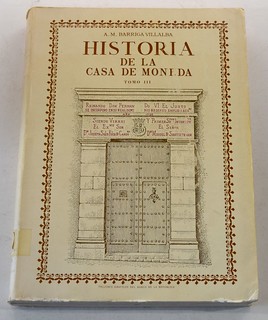

Lots 17 and 25
Barriga-Villalba, A.M. HISTORIA DE LA CASA DE MONEDA. Banco de la Republica Archivo de la Economia Nacional. 1969. 8vo, 1271 pages; Softcover; ex library; Three volumes; covers worn, volume 1 with some separation from binding; library numbering taped to spines; Spanish text; This book is the premier reference on the archival information of the Colombian mints. Volume I primarily covers the cob coinage, Volume II primarily covers the milled colonial coinage, and Volume III primarily covers the milled Republic and later coinage. Each volume contains numerous example coin photos and photos of early archival documentation. Subject: History - Mints - Colombia
To read the complete lot description, see:
Barriga-Villalba: Historia de la Casa de Moneda
(https://www.icollector.com/item.aspx?i=33413848)
Burzio, Humberto F. DICCIONARIO DE LA MONEDA HISPANOAMERICANA. Fondo Historico Y Bibliografico. 1956. 4to, 896 pages; Softcover; Volumes I (A a LL), II (M a Z) & Laminas; original matching printed card covers; 116 plates; Very good; A very useful work and a true inventory of the state of Spanish-American numismatics at the time of its printing. It is an exhaustive study of the Spanish-American coinage conveniently arranged in alphabetical order by entries. Subject: Coinage - Latin America
To read the complete lot description, see:
Burzio: Diccionario De La Moneda Hispanoamericana
(https://www.icollector.com/item.aspx?i=33413856)
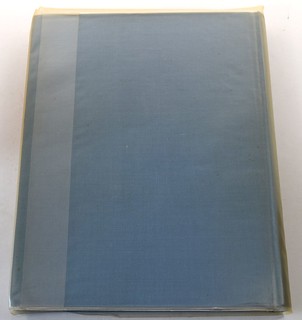

Lots 28 and 35
Calbeto de Grau, Gabriel. COMPENDIUM VIII REALES. Juan Ponce De Leon. 1970. 4to, 733 pages; Hardcover; Two volumes; Blue cloth gilt; Text in both English and Spanish; Includes list of prices booklet; A comprehensive study of the Eight Reales of Spain, Mexico, Central America, and South America, an index of the rulers of the time period, and a listing of mints in alphabetical order. It catalogs virtually every eight real coin ever minted and is richly illustrated with hundreds of photographs. It is regarded by many as the definitive guide to eight reales. Subject: Coinage - Spain - Colonial
To read the complete lot description, see:
Calbeto de Grau: Compendium VIII Reales: Vols. I & II
(https://www.icollector.com/item.aspx?i=33413859)
Carlota de Pardo, Mercedes. MONEDAS VENEZOLANAS. Banco Central de Venezuela. 1973. 8vo, 778 pages; Softcover; Two volumes: Colección Histórico-Económica Venezolana: Volumen VI & VII; Includes bibliographical references. Numerous fold-out charts. This book presents the history of the Venezuelan currency from 1802 to 1986. The first volume is a thorough study of the coin, with abundant plates, and the second volume is a compilation of laws, decrees and provisions on Venezuelan coins. Subject: History - Coinage - Venezuela
To read the complete lot description, see:
Carlota de Pardo: Monedas Venezolanas
(https://www.icollector.com/item.aspx?i=33413866)


Lots 88 and 98
Jara Moreno, Carlos. (Signed) HISTORIA DE LA CASA DE MONEDA DE COQUIMBO. LOM Ediciones Ltda. 2001. 4to, 131 pages; Softcover; Inscribed by the author; this book is a well researched history of the mint at Coquimbo, Chile. With numerous photos of the coins and mint documents. Subject: History - Mint - Chile
To read the complete lot description, see:
Jara Moreno: (Signed) Historia de la Casa de Moneda de Coquimbo
(https://www.icollector.com/item.aspx?i=33413919)
Lazaro, Jose Luis. LOS REDONDOS DE LIMA, MÉJICO Y POTOSÍ Y OTRAS ACUÑACIONES ESPECIALES. Jose Luis Lazaro Dominguez. 1996. 8vo, 461 pages; Hardcover; Brown leatherette gilt; Limited edition 176 of 1000 copies; includes addenda booklet; this is the premier work on the Spanish colonial 'royals' and 'hearts'. It covers all denominations and mints. Coins are presented with b&w phtos. Subject: Coinage - Spain - Colonial
To read the complete lot description, see:
Lazaro: Los Redondos de Lima, Méjico y Potosí y otras acuñaciones
especiales (https://www.icollector.com/item.aspx?i=33413929)
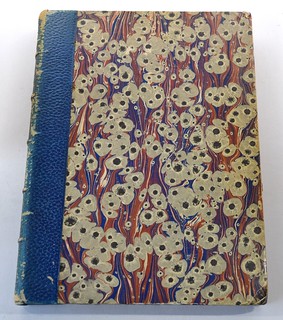

Lots 111 and 157
Medina, Jose T. LAS MONEDAS COLONIALES HISPANO-AMERICANAS. Santiago de Chile: Imprenta Elzeviriana. 1919. 4to, 406 pages; Hardcover; Half binding of blue leather with four raised bands and gilt lettering to spine; with decorative boards, marbled edges and end papers; binding rubbed and worn, contents very good; Limited edition of 150 copies; 484 halftone text illustrations; A rare and important classic standard reference work, comprising a true history of coinage in Spanish America with supporting documentation. Subject: Coinage - Latin America
To read the complete lot description, see:
Medina: Las Monedas Coloniales Hispano-Americanas
(https://www.icollector.com/item.aspx?i=33413942)
Pradeau, Alberto Francisco. NUMISMATIC HISTORY OF MEXICO, FROM THE PRE-COLUMBIAN EPOCH TO 1823. Alberto Francisco Pradeau. 1938. 4to, 146 pages; Hardcover; Bound in full antique Spanish leather, 4 raised spine bands; Important early work on Mexican coinage from pre-colonial through before independence from Spain. Subject: Coinage - Mexico
To read the complete lot description, see:
Pradeau: Numismatic History of Mexico, from the Pre-Columbian Epoch to 1823
(https://www.icollector.com/item.aspx?i=33413988)
To visit the Workman's Books web site, see:
http://www.workmansbooks.com/

CHICAGO COIN CLUB CENTENNIAL RED BOOK
The Chicago Coin Club has arranged with Whitman Publishing for a special edition Red Book celebrating their 100th anniversary. -Editor
100th Anniversary Red Book®
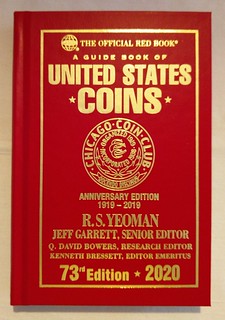

The Chicago Coin Club in conjunction with Whitman Publishing has released a special edition Red Book® A Guide Book of United States Coins. This special edition Red Book is just one of many ways the club is celebrating their 100th anniversary of being chartered as an official organization in 1919. As with all Red Books being dated with the following year's date, this special edition book is the most recent 2020 dated book that was released in April 2019.
The Chicago Coin Club Red Book has a custom cover with the club logo and “Anniversary Edition 1919 – 2019.” The reverse cover lists the club’s Latin motto “Docendo Discimus” meaning “We Learn By Teaching” a reference to the educational aspect of the clubs programs, speakers and numismatic show-and-tell at each meeting. Also listed on the back cover is the club’s objective...
“To pursue numismatic knowledge through the study and research of coins, currency, medals, tokens, and other related items and the sharing of this information through monthly meetings, dialogue, and the publication of literature.”
The spine of the Red Book has a special “CCC 100” imprint. A special two-page bound insert outlines the club history starting with the Chicago Numismatic Society (CNS). A second numismatic group was added with the formation of the American Numismatic Association (A.N.A.) Branch No. 1. This was the result of a change in the A.N.A. constitution brought forth at the 1912 Rochester, N.Y. convention, which allowed for the formation of branch clubs. The Secretary of the Society, ever alert to promote the Chicago numismatic community, was the first at that convention to file an application for a charter, thereby entitling the Chicago group the honor of receiving number #1. The two groups were never officially affiliated though their membership overlapped considerably. How this history evolved into today's 100 year-old chartered Chicago Coin Club can be further explored in this Red Book section.
This history continues up to the club's 1200th meeting on January 9, 2019 and its upcoming sold out 100th Anniversary banquet in August 2019 in conjunction with the ANA World’s Fair of Money®, the largest national numismatic convention which the Chicago Coin Club is serving as Host Club.
Finally, the Red Book Page 445 lists this special limited edition Chicago Coin Club book in the “Collectable Red and Blue Books” section showing the 250 book print run as one of the lowest limited editions with a Red Book value of $50 in VF and $125 in NEW condition. This limited edition is expected to sell out fast. Pre-publication sales have sold 67% of the print run. The current book price is $20.00 (add $5.00/book for packaging & shipping)
Interested individuals can order a Chicago Coin Club Red Book® Pre-Paid orders will be accepted on a first come first serve basis and can be placed two ways... Electronic payment: Zelle transfer visit https://www.zellepay.com to see if your bank is part of the network. Your bank's phone application must be on your smart phone and "location" enabled. The Club has registered: Treasurer.ChicagoCoinClub@gmail.com with Zelle to receive payments. Complete the "What is this for?" message field with “CCC Red Book” and you full Name and Mailing Address. You have 200 characters in the MESSAGE section of ZELLE to add your name and address. You will be notified instantly via email that your payment was sent. The Club will receive your payment typically within minutes. However, the first transaction made on the Zelle Network could take 2-3 days. Books will be shipped after pre- paid orders are received.
By US Mail orders can be sent to CCC REDBOOK PO BOX 2301 CHICAGO IL 60690. All orders must be accompanied by payment.
For more information on the Chicago Coin Club, see:
http://www.chicagocoinclub.org/
JOURNAL OF EARLY AMERICAN NUMISMATICS JUNE 2019
The latest issue of the Journal of Early American Numismatics (JEAN) has been published. Here's the announcement from the American Numismatic Society, from their May 2019 E-News. -Editor
 The first issue of 2019 for
the Journal of Early American Numismatics (JEAN) is currently being printed and will be mailed to subscribers mid-June. Articles include “John
J. Ford, Jr.: A Life in Three Portraits” (Q. David Bowers), “Lion Dollars: A Collector’s Viewpoint” (Ray Williams), “The Massachusetts Pine Tree
Penny: A Copper Token Struck in Boston in 1776” (Julia H. Casey), “Point/Counterpoint: John Kleeberg’s Continental Dollar” (Jeff Rock), “Research
Notes Regarding the Non Dependent Status Copper Coinage” (Byron White), “Identification and Classification of an Important New Variety of the
Massachusetts Silver Coinage: The Salmon 11-X Pine Tree Shilling” (Christopher J. Salmon), “Newman Sale Uncovers New Rubber Lady Family Varieties”
(Kayla Schlemmer), “John Bailey’s New York City Mint” (Gary A. Trudgen), “The Spanish Colonial Mint at Potosì: A Comparative Look” (Brian Stickney),
and “A Biography of Thomas Sparrow (V)” (Joseph Daragan). To subscribe, visit numismatics.org/store/cnl or call Emma Pratte at 212.571.4470 x117.
The first issue of 2019 for
the Journal of Early American Numismatics (JEAN) is currently being printed and will be mailed to subscribers mid-June. Articles include “John
J. Ford, Jr.: A Life in Three Portraits” (Q. David Bowers), “Lion Dollars: A Collector’s Viewpoint” (Ray Williams), “The Massachusetts Pine Tree
Penny: A Copper Token Struck in Boston in 1776” (Julia H. Casey), “Point/Counterpoint: John Kleeberg’s Continental Dollar” (Jeff Rock), “Research
Notes Regarding the Non Dependent Status Copper Coinage” (Byron White), “Identification and Classification of an Important New Variety of the
Massachusetts Silver Coinage: The Salmon 11-X Pine Tree Shilling” (Christopher J. Salmon), “Newman Sale Uncovers New Rubber Lady Family Varieties”
(Kayla Schlemmer), “John Bailey’s New York City Mint” (Gary A. Trudgen), “The Spanish Colonial Mint at Potosì: A Comparative Look” (Brian Stickney),
and “A Biography of Thomas Sparrow (V)” (Joseph Daragan). To subscribe, visit numismatics.org/store/cnl or call Emma Pratte at 212.571.4470 x117.
This looks like another great issue with many articles and new research of interest to E-Sylum readers. -Editor
COLLECTING BARBER SILVER COINS
Earlier this year Whitman Publishing released the 2nd edition of Dave Bowers' book on Barber silver coins. John Frost, president and journal editor of the Barber Coin Collectors’ Society, penned these thoughts on collecting Barbers. Thanks to Dennis Tucker of Whitman for the text and images. -Editor
by John Frost, president and journal editor of The Barber Coin Collectors’ Society
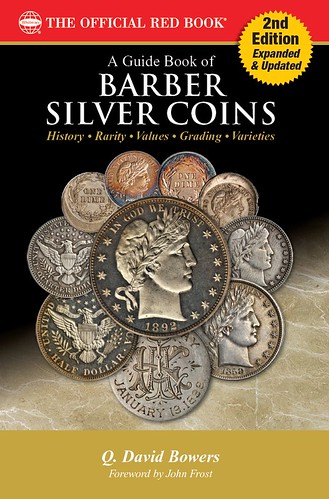 When I began collecting
coins in fourth grade, I really got the bug, and soon took this new hobby of mine seriously. Like several of my friends I started with Lincoln cents,
and I assembled most of the collection by sixth grade. Then a major event in my young numismatic life occurred when I visited my grandparents in
Arkansas during a summer vacation. My grandfather gave me an old coin for my collection. It was a 1911-S Barber dime. It was only a Good+ coin, but
it still retained enough meat on it to be interesting, and it was a coin that my grandfather had culled from circulation not too long before I was
born. A second dime, a 1904-P given soon thereafter, was the clincher.
When I began collecting
coins in fourth grade, I really got the bug, and soon took this new hobby of mine seriously. Like several of my friends I started with Lincoln cents,
and I assembled most of the collection by sixth grade. Then a major event in my young numismatic life occurred when I visited my grandparents in
Arkansas during a summer vacation. My grandfather gave me an old coin for my collection. It was a 1911-S Barber dime. It was only a Good+ coin, but
it still retained enough meat on it to be interesting, and it was a coin that my grandfather had culled from circulation not too long before I was
born. A second dime, a 1904-P given soon thereafter, was the clincher.
Those two coins got me started in Barbers, and I haven’t looked back since. By the time I began high school I had a complete year set of Barber dimes, along with most of the later mintmarked coins. Putting this set together took time and some real work, and it was a project I enjoyed. In those days only one or two dealers advertising in publications mentioned Barbers, and the coins didn’t show up at my local shop very often either. As my album filled up, I loved showing this set to other friends who collected coins. It was something different than everyone else’s collection!
Barber coins were real workhorses in their time. Dimes, quarters, and half dollars were all used heavily in commerce, perhaps more so than any other coins that came before them. They had another big attraction for me: They hold up well to wear, and look quite decent even down to a grade of Very Good. This is great for Barber collectors. Many other coin designs don’t keep their attractiveness nearly as long. This means a collector with a limited budget can build a collection of lower-grade Barbers and still have an attractive set to appreciate. My dimes were a typical example of that.
As I grew older, I bought a bag of 90 percent silver coins that consisted of mostly worn-out Barber quarters, but included numerous VG coins, with even a couple of Fine and Very Fine coins mixed in. At the time there were no good comprehensive references on Barbers of any denomination. I relied solely on my Red Book, as a general guide. The more I examined my quarters, the more I got hooked on them. I began building a new collection! This presented a greater challenge than the dimes, as the Red Book clearly showed the quarter series has three clear key dates: the 1896-S, the 1913-S, and the king, 1901-S. Even outside the three key dates, there would be some tough coins, as well as rewards for a diligent collector. The 1914-S quarter, not even one of the keys, has the same low mintage as the famous 1916-D Mercury dime. However, it can be bought at a small fraction of the Mercury dime’s cost. What a bargain!
A huge day for me was when I acquired a 1901-S in VG. It was my first four-figure coin, and at $1,650, seemed like a good buy. That would turn out to be an understatement (today it’s closer to being a $10,000 coin). Over the years I upgraded each piece (sometimes more than once), and now my Extremely Fine to Mint State quarter set is a highlight in my collection.
THE SPECIAL APPEAL OF BARBER SILVER COINS
The magic of the silver Barbers is that each of the three series has its own special and unique characteristics that make it great, and also make it different from the other two.
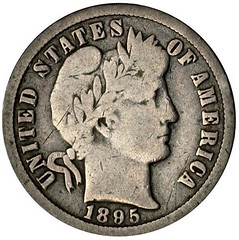

Building a set of dimes is a goal that is eminently attainable, with the key date 1895-O and numerous semi-keys providing a real challenge, regardless of the grade range you’re collecting. And of course the dime series boasts one of the legendary rarities in U.S. numismatics—the 1894-S dime, a coin that even the sixth-grader version of me was aware of. Even though it wasn’t a regular issue, and is not needed for the “complete set,” its presence in the series adds to the fun of collecting.
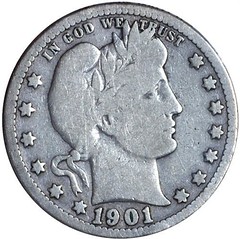

The quarters have the “Big Three” issues which are very scarce, even in low grades, and provide a daunting challenge in any grade above Very Good. To me, however, the beauty of the quarter series is the huge challenge faced by anyone building a set in higher circulated grades, where many semi-keys, not just the three keys, are very difficult to obtain.
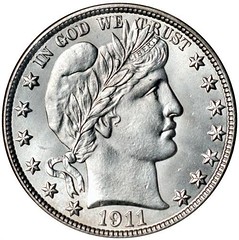
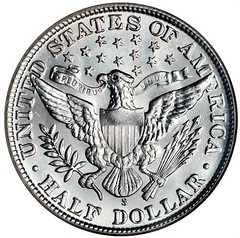
The halves are larger pieces of silver, and, while posing a higher cost of entry than the other two series, are quite possibly the easiest Barber set to complete in lower grades. Although the halves do not have rare dates of the magnitude of the Big Three quarters, the series is loaded with semi-key issues that require time and dedication to acquire, especially in higher grades.
WELCOMING A NEW GENERATION OF COLLECTORS
In the early 1990s I discovered the David Lawrence Complete Guide books on the Barbers. When I met Dave in person, he introduced me to the Barber Coin Collectors’ Society (BCCS). My passion for Barber coins only increased, and I gained more knowledge about the three series than I ever could have imagined.
 Nearly 25 years later, no new
comprehensive references on Barbers were on the shelves, other than a few books focused solely on varieties. Then Dave Bowers began a new book, A
Guide Book of Barber Silver Coins.
Nearly 25 years later, no new
comprehensive references on Barbers were on the shelves, other than a few books focused solely on varieties. Then Dave Bowers began a new book, A
Guide Book of Barber Silver Coins.
This brought together the latest information on these great coins and made it available to a wide group of new collectors. It provided these collectors with a comprehensive reference on all three series, all in one place. Another enjoyable facet of the Guide Book of Barber Silver Coins is that it puts these important coins in historical context, with anecdotes from the era in which they were made, and the many decades thereafter that they were used in day-to-day commerce.
When Dave Bowers solicited my assistance and that of the BCCS for our thoughts on the date-by-date coin analysis, we were honored and thrilled to help. His goals are consistent with the mission of the Barber Coin Collectors’ Society: to introduce a new generation of collectors to Barbers, and to provide the needed information to fuel their passion for these important and wonderful coins.
I hope you enjoy these impressive coins, understand their historical significance, and appreciate the numismatic challenge as much as I have. Happy collecting!
A long-time numismatist, John Frost is the president and journal editor of the Barber Coin Collectors’ Society, the director of education for the Liberty Seated Collectors Club, and co-author of the reference book Double Dimes—The United States Twenty-Cent Piece. He is also an instructor at the American Numismatic Association’s Summer Seminar, an award-winning exhibitor, and co-president of his local coin club in Massachusetts.
A Guide Book of Barber Silver Coins, 2nd edition
By Q. David Bowers; foreword by John Frost
ISBN 0794846386 · 6 x 9 inches, softcover, 400 pages, full color · Retail $29.95 U.S.
URL: https://www.whitman.com/store/Inventory/Detail/A-Guide-Book-of-Barber-Silver-Coins-2nd-Edition+0794846386
To read the earlier E-Sylum article, see:
NEW BOOK: GUIDE BOOK BARBER SILVER COINS 2ND ED.
(https://www.coinbooks.org/v22/esylum_v22n04a02.html)

BOOK REVIEW: CURIOUS CURRENCY, 2ND EDITION
Michael E. Marotta submitted this review of the new edition of Bob Leonard's Curious Currency. Thanks! -Editor
 Curious
Currency: The Story of Money from the Stone Age to the Internet Age; 2nd Edition by Robert D. Leonard, Jr.; Whitman Publishing, 2019; 153+vi
pages; $16.95.
Curious
Currency: The Story of Money from the Stone Age to the Internet Age; 2nd Edition by Robert D. Leonard, Jr.; Whitman Publishing, 2019; 153+vi
pages; $16.95.
After an introductory overview, the chapter titles are Raw Materials, Useful Articles, Ornaments, Customary Objects, and Money Substitutes. Coins fall under “raw materials” because they were valued as metal. But silver, gold, copper, bronze, and iron must take their place alongside obsidian and flint which also were money. Coins also appear under “customary objects” along with elephant tails, woodpecker scalps, and human skulls.
Whiskey, tobacco, tea, cocaine, and postage stamps are considered “useful articles.” Beads of coral, jade, glass, clam shells, cowry shells, silver, and turquoise, arm rings, neck rings, anklets, and many kinds of necklaces are “ornaments,” of course.
That almost anything can be used as money underscores the broad extent of society and culture. Therefore, it is cogent that the book closes with examples of “nothing” as money. RFID transmissions, cellphones as proxies, and cybernetic cryptocurrencies bring the reader near to—but not at—the end of the story of money.
Overall, Curious Currency is an excellent treatment of a complex and difficult subject. The book is easy to read and worth every minute.
Make no mistake: this little book is very scholarly. An impressive 495 footnotes support the 126 octavo pages of text and about 250 illustrations (some are composites). But we all have our passions and prejudices. And I was disappointed not to see an advance in the scholarship since the first edition of 2010.
Denise Schmandt-Besserat’s Before Writing (University of Texas Press, 1992) tied the origins of writing and the invention of numbers greater than three to the creation of clay tokens in the Fertile Crescent of the Middle East circa 7500 BCE. Though not traded as money or gifts, the tokens served an economic purpose as records of debts. David Graeber’s Debt: The First 5,000 Years (Melville House, 2011) completely overturned our common imaginings about the origins of money. According to Graeber. trade did not originate with economic calculations of surplus. Money did not originate with trade for profit. Money did not evolve from barter.
Those airy theories were shared by both Karl Marx and Ludwig von Mises, which is why Robert Leonard accepted them uncritically. Graeber showed that trade began as ritual gift exchange. Often it was the giving of a tangible to acknowledge an intangible based on social status. Graeber’s strongest evidence is negative: No example is known of a society that moved from barter to money, but many examples show that barter is what people resort to when money fails. Robert Leonard’s rich monograph supports those assertions. I am only sorry that he did not make them explicitly.
I believe that Chapter 1, “What is Money?” is contradictory both internally and as presented by the larger book. Leonard writes: “In simplest terms money is ‘anything used to make a payment that the recipient trusts can be reused to make another payment.’ This includes items used as money only for special purposes or situations, such as bride-price, funeral offerings, heiliges geld (offerings made to propitiate deities), trading with Westerners, or usage only by native chiefs. Among those bride-price is payment made to the bride’s parents as compensation for their loss of her valuable work services.” (Page 2)
Obviously, of the items listed, none is an example of any expectation of further exchange. Bride- price is a case in point. The material offering only completed the social bonding of the families by the marriage. Calculating the labor of the bride eventually evolved thousands of years later and only in some places and times, not universally. Of course, the complement of bride-price is dowry. If bride-price is meant to be the result of an economic calculation that is carried out in money objects, what moneys are accepted as dowry; and, if the bride brings valuable labor, why is dowry being offered?
For a small book, Curious Currency delivers a lot to think about. We easily call it “coin collecting” even though numismatics is the art and science that studies all of the forms and uses of money. This dense little book is about the forms that “money” (exchange objects, ritual gifts) has taken over the thousands of years of human society. Of necessity, this is a broad topic, potentially encyclopedic in scope. Robert Leonard makes the information load manageable by wrapping the stories and narratives into convenient chapters based on conceptual themes.
To read earlier E-Sylum articles, see:
NEW BOOK: CURIOUS CURRENCY, SECOND EDITION
(https://www.coinbooks.org/v22/esylum_v22n12a02.html)
BOOK REVIEW: CURIOUS CURRENCY
(https://www.coinbooks.org/v22/esylum_v22n14a04.html)
ANS ANNOUNCES HELLENISTIC ROYAL COINAGES SITE
ANS has announced a new web site for Hellenistic Royal Coinages. Here's the press release. -Editor

The American Numismatic Society (ANS) is pleased to announce the launch of a new online resource, Hellenistic Royal Coinages (HRC)(http://numismatics.org/hrc/). A National Endowment for the Humanities funded project based at the ANS in New York City, HRC is a web-based resource for users to learn about, research, and conduct different types of statistical analyses on the coinages produced by the different dynasties and rulers of the ancient Mediterranean and Near East during the Hellenistic period (ca. 323–31 BC). These include the coins struck by (and in the name of) Alexander the Great and those struck by his successors, such as the Seleucids in the Near East and the Ptolemies in Egypt.
The new HRC website serves as a Union Catalogue of existing online resources devoted to Hellenistic coinages and allows users to search across all these sites simultaneously. These sites include: PELLA (http://numismatics.org/pella/), a resource that currently focuses on the coinage in the name of Alexander the Great; Seleucid Coins Online (http://numismatics.org/sco/), a resource devoted to the coinage of the Seleucid dynasty; and Ptolemaic Coins Online (http://numismatics.org/pco/), a resource for the coinage of the Ptolemaic dynasty. In the future we hope to add additional resources for the coinages of other Hellenistic dynasties and rulers including the Antigonid, Attalid, and Bactrian dynasties.
Currently over 31,200 individual coins from seventeen institutions are illustrated and described in the HRC catalogues. While the American Numismatic Society’s collection serves as the core of all these searchable catalogues, thousands of examples are illustrated by links to coins in other major collections including those in the Bibliothèque nationale de France, the British Museum, the Münzkabinett der Staatlichen Museen zu Berlin, and other public collections in the US and Europe.
ANS Executive Director Ute Wartenberg notes that “the HRC website promises to transform the way in which scholars, collectors, and others research and learn about Hellenistic Coinages.”
To read the complete press release, see:
Press Release | Hellenistic Royal Coinages (http://numismatics.org/hrc-pr/)
NEW BOOK: GREAT AMERICANS HALL OF FAME MEDALS
The latest addition to the Newman Numismatic Portal is a new book by David Alexander on the medals of the Hall of Fame for Great Americans. Project Coordinator Len Augsburger provided the following report. Thanks! -Editor
Medals of the Hall of Fame for Great Americans at New York University
by David T. Alexander
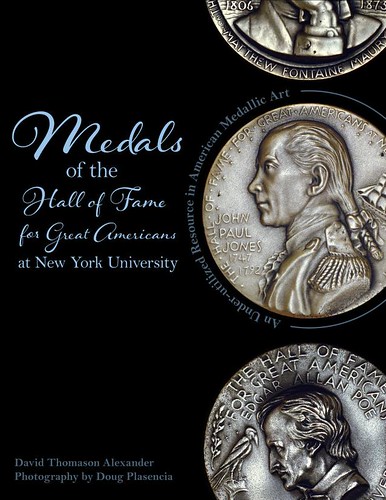 The early-1960s brought a “boomlet” in medal collecting, with
the issuance of the John F. Kennedy inaugural medal riding the crest of a rising numismatic wave. Coin World launched in 1960, and the
appetite for all things numismatic was strong. By the end of the decade the Franklin Mint and other manufacturers oversaturated an exhausted
collector base with the result that certain artistically worthy medals never received their full due.
The early-1960s brought a “boomlet” in medal collecting, with
the issuance of the John F. Kennedy inaugural medal riding the crest of a rising numismatic wave. Coin World launched in 1960, and the
appetite for all things numismatic was strong. By the end of the decade the Franklin Mint and other manufacturers oversaturated an exhausted
collector base with the result that certain artistically worthy medals never received their full due.
Alexander brings a penetrating light aimed at sorting the wheat from the chaff, and in this case honors the series of medals honoring inductees of the Hall of Frame for Great Americans at New York University. Issued by Medallic Art Company from 1962 until the mid-1970s, the series consists of 94 medals sculpted by some of the best known engravers of the period. Many of these can today be easily acquired on ebay (a quick search reveals 20 “hits”) and other sources for nominal prices. The approach taken by Alexander is similar to his treatment of early 20th century American art medals (American Art Medals, 1909-1995, published by the American Numismatic Society), including metrology, historical context, and critical assessments of each medal.
For this project, Alexander contributed text and images to Newman Portal, which were then formatted under NNP sponsorship to accomplish a professional result worthy of the subject matter. Newman Portal invites other authors to similarly collaborate. Newman Portal NNP acknowledges Doug Plasencia and Pat Alexander for photography, and Lianna Spurrier for graphics layout and design.

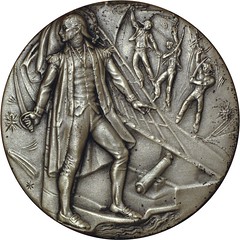
Image: John Paul Jones medal, engraved by Michael Lantz
Link to Medals of the Hall of Fame for Great Americans at New York University on Newman Portal:
https://nnp.wustl.edu/library/booksbyauthor/130
I read this online and my thoughts were: what great medals! Collect 'em all - I dare you to try! David Alexander's book will be an indispensable guide and checklist for this uniquely American series. -Editor
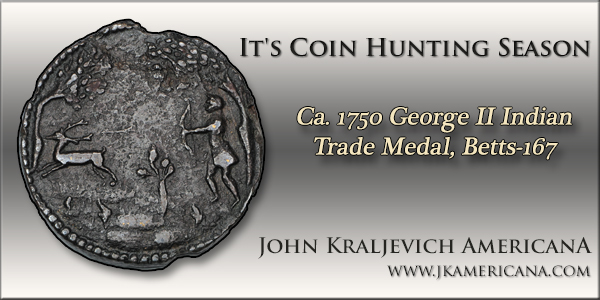
VIDEO: COIN WORLD REPORTER CHRIS BULFINCH
These are selections from the David Lisot Video Library that feature news and personalities from the world of coin collecting. David has been attending coin conventions since 1972 and began videotaping in 1985. In 2017 the Newman Numismatic Portal reached an agreement to list all David’s videos on their website. Each week an excerpt of a different video is available on the CoinTelevision YouTube channel.
Here's one with Coin World News Reporter Chris Bulfinch. -Editor
 Chris Bulfinch has been hired by Amos Media the company that owns Coin World as a news reporter. Central
States the first major coin convention for Chris. He shares how he got involved with coins and his background in in life including his name
Bulfinch.
Chris Bulfinch has been hired by Amos Media the company that owns Coin World as a news reporter. Central
States the first major coin convention for Chris. He shares how he got involved with coins and his background in in life including his name
Bulfinch.
The entire interview is available on the Newman Numismatic Portal at:
https://nnp.wustl.edu/library/book/564928
An excerpt of the video is available for viewing on the Coin Television YouTube Channel at:
https://youtu.be/kQP0rs0zAWk
Chris Bulfinch Hired as News Reporter for Coin World
VIDEO: 4:11.
Chris Bulfinch, Associate Editor, Coin World/Amos Media, David Lisot, Interviewer, CoinTelevision.com
ON NUMISMATIC DOCTORING AND CONSERVATION
Jeffrey Zarit writes:
Watching ANTIQUES ROADSHOW on TV, one sees many unusual and rare antiques. Whether it be poster, painting, pottery, clocks, or almost anything else; the appraiser tells the owner that a restorer, someone that makes it look better, that repairs the damage will in almost all cases, make the object worth more, sometimes by a substantial amount.
If this is the case, why is it that a coin that is cleaned, a coin that is repaired, a coin that is made to look better, is, in almost all cases, worth substantially less, and that everyone who knows about such on an item will look down at it, and not even try to purchase it, as if to say, its value is worthless.
I JUST DON’T GET IT !! I wonder what I am not seeing.
There are a number of aspects and nuances to this topic, and tools, techniques and attitudes have changed over the years as well, leaving behind a treacherous landscape.
In numismatics, the advice to a non-collector is always to never attempt to clean or otherwise improve the appearance of a coin. This is because doing it right takes skill and experience, and most amateur attempts, however well-meaning, are ham-handed and result in damaged coins.
"Doing it right" is one of the nuances, as are "well-meaning" and "damaged". Let's start with damage, because it's fundamentally linked to marketplace value.
Damage: Holes, dings, dirt, dents and scratches are among the worst forms of damage to a coin. For paper money the list would include holes, dirt, folds/creases, and graffiti. There's almost nothing to like about any form of damage, and damage decreases the value to a collector (although there are some rare exceptions such as a famous person's signature, a famous collector's identification mark or even a famous bullet hole).
Wear and toning are forms of damage as well, and there are books and whole industries built around the topic. The more wear, the less desirable the piece. As an engineer I'd like to think that damage, wear and toning are absolute and easy to measure and to some extent they are, but beauty is in the eye of the beholder and there is room for interpretation even here, especially with toning. One man's gorgeous toning is another's hideous discoloration. Today's "Numismatic Nuggets" column illustrates what I think is a nicely toned piece. Was it toned artificially? Does it matter?
Skill: Rubbing silver coins with a baking soda paste will make them look nice and shiny, but it will also inflict great damage on the coin's surfaces. "Whizzing" is another old practice of buffing a coin that leaves a multitude of traces on the coin. While improving one aspect of the coin, they inflict great damage on other aspects. By further damaging the coin these attempts reduce value. "Doing it right" is important.
But what if the work is so good that the coin ends up in state where no damage is added and none is visible or detectable? If the earlier damage is removed without a trace, is the piece now more desirable? Is it worth more than before? Well, that can be a tricky question, too. Your coin has been "doctored". My coin has been "carefully conserved".
Consider paper money. Because banknotes have serial numbers it's possible to trace individual notes over time. Today's nice, clean, flat, crisp note had two smudges, a hole and four creases when it was sold ten years ago. Did it magically heal itself in a safe deposit box down the road from a nuclear waste dump? Or did someone carefully close the hole and clean and iron the note before putting it up for resale? Is the note worth more, less, or the same? Is that doctoring or conservation?
Intent: This is the "well-meaning" part. If repairs and retoning are fully disclosed with no attempt to deceive, then potential buyers have the information they need to decide how much a piece is worth to them. I might pay more for a properly conserved piece than an unconserved one. Would I pay as much as I would for a completely original piece that never required conservation? Maybe, maybe not. OK - probably not. But let me decide that.
And of course, there is the routine conservation that is not repair at all but simply the removal of dirt and contaminants that could cause damage in the future. That's simply good stewardship. As Alan V. Weinberg stated (see the 2013 article linked below): "The "doctored" appellation should apply exclusively to defects concealed by a process in an attempt to increase value and deceive a buyer, not to merely preserve condition."
It's a complicated topic, and one where opinions and practices change and evolve over time. See the E-Sylum article about the PCGS "Sniffer" system that was rolled out to detect traces of foreign substances on coins submitted for authentication. The referenced video has since been taken down. The E-Sylum screen captures may be the only remaining trace of this technology.
I ran my thoughts past E-Sylum regulars Joel Orosz and Len Augsburger, and they shared these observations. Thanks. -Editor
Joel writes:
My general rule has always been that if you can see evidence that work has been done on a coin, it has been cleaned; if you can see no evidence that work has been done, the coin has been curated.
But I think your response goes beyond this simplistic rule to discuss the imponderables involved. Gunmetal blue toning on a silver coin is a form of damage called tarnish. A judicious dipping will bring back brilliance. It is impossible to say, however, which state is better—after, neither toning nor dipped brilliance are natural States of a coin—“better” is essentially a matter of individual taste and preference.
Len writes:
One word: luster. Many types of cleaning, doctoring, curating, whatever you want to call it, impair luster. Collectors can decide original luster is not important to them, but it would be wise, when buying or selling, to understand they are thinking differently than most others.
To read the earlier E-Sylum article, see:
THE PCGS COIN SNIFFER (https://www.coinbooks.org/esylum_v16n06a16.html)
NOTES FROM E-SYLUM READERS: JUNE 2, 2019
The ANA Past President Medal
Pete Smith writes:
 There was an item published in The Numismatist in 1948 about the Past President medal
authorized at the convention in the previous year. There was no article about an Ex-President medal.
There was an item published in The Numismatist in 1948 about the Past President medal
authorized at the convention in the previous year. There was no article about an Ex-President medal.
I suspect that the ANA medal mentioned in The E-Sylum last week was issued by one of many other organizations with the ANA initials. At one time David Sklow collected medals issued by other ANA organizations. Last I heard, he was no longer collecting them.
Documentary evidence is important, but can't always be found. Perhaps something will turn up to link Jeremy Schneider's badge to the American Numismatic Association or even one of its early past presidents. -Editor
To read the earlier E-Sylum article, see:
NOTES FROM E-SYLUM READERS: MAY 26, 2019 : ANA Ex-President Medal?
(https://www.coinbooks.org/v22/esylum_v22n21a18.html)
On Finding Coins in Unexpected Places
Max Hensley writes:
I've followed this topic with interest. My grandfather found a middle ages Islamic dynastic silver coin in his garden in Stanberry MO in the 1930s. I have no confirmation of the story but the coin itself is laying around here somewhere. What a tale could be told....
To read the earlier E-Sylum article, see:
UTAH SPANISH COIN FIND: NEVERMIND
(https://www.coinbooks.org/v22/esylum_v22n21a25.html)
Round Civil War Cardboard Tokens Sought
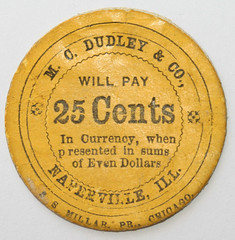
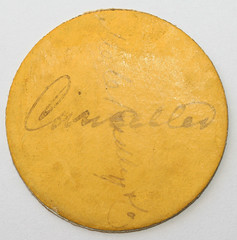
David E. Schenkman is compiling listings for a catalog of round cardboard tokens issued during the Civil War. To make this as complete as possible, readers owning any of these tokens are urged to send exact descriptions or scans to him. The catalog will be published in a future issue of The Civil War Token Journal.
Correspondence should be sent to David E. Schenkman, PO Box 2866, La Plata, MD 20646, or emailed to dschenkman@verizon.net -Editor
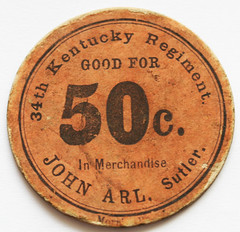

Real-Time Auction Bidding On Space-Based Public WiFi
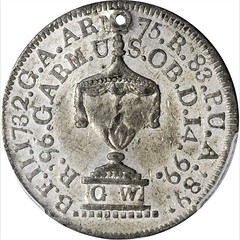 Roger Siboni works hard, and collects hard. When a coin he really
really wants comes up at auction, he finds a way to be there in the room, bidding in real time to secure his prize. But with so many sales on the
East Coast and his weekday work in Silicon Valley, he often finds himself catching a redeye flight from San Francisco to bid on rare colonials in
Stack's Bowers sales.
Roger Siboni works hard, and collects hard. When a coin he really
really wants comes up at auction, he finds a way to be there in the room, bidding in real time to secure his prize. But with so many sales on the
East Coast and his weekday work in Silicon Valley, he often finds himself catching a redeye flight from San Francisco to bid on rare colonials in
Stack's Bowers sales.
This week Roger was working with Vicken Yegparian of Stack's Bowers to bid on a very rare Washington Funeral medal. But he was just stepping onto a Jet Blue flight about half an hour before the lot came up. As a tech exec working with companies in the satellite communication space, Roger proposed a technology experiment - would the bandwidth, latency and sustainability of Jet Blue’s new public WiFi be up to the task? -Editor
Roger writes:
So I put my phone on WiFi and continued texting Vicken as a real-time time check. Lot 3268 was approaching and the current level was $19,000. I bid it up to $22,000 and won the lot. It was awesome to bid real time on a public airplane WiFi from low earth orbiting satellites (probably those recently launched by SpaceX). I wonder if that was a first? Not private narrowband airplane Wifi, but PUBLIC WiFi -as if I was bidding on a laptop in the room in Baltimore. Synchronous texting was pretty amazing. Email is far more stable because it doesn’t require the same level of synchronicity. I am going to have to experiment more with online bidding.
Very cool! Has anyone else tried this yet? -Editor
To read the complete lot description, see:
"1799" (ca. 1800) Washington Funeral Urn Medal. White Metal. GW on Base. Musante GW-72a, Baker-167, Fuld Dies 6-F. Rarity-7. AU-53
(PCGS).
(https://auctions.stacksbowers.com/lots/view/3-IAZWJ/1799-ca-1800-washington-funeral-urn-medal-white-metal-gw-on-base-musante-gw-72a-baker-167-fuld-dies-6-f-rarity-7-au-53-pcgs)
Vocabulary Term: Numisnautist
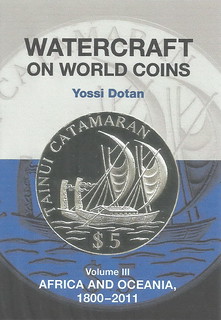 Ron Guth writes:
Ron Guth writes:
This is a new, numismatic term I have not heard before (from an announcement of Auctions 322 and 324 by Kunker of Germany): "As a former sailor, Mr. Westphal is an avid “numisnautist”, that is, a collector that focuses on maritime-themed coins."
I hadn't heard that term before and it doesn't seem to appear anywhere in our E-Sylum archives. But our resident numisnautist would be Yossi Dotan, author of three volumes about Watercraft on World Coins. -Editor
To read the earlier E-Sylum article, see: NEW BOOK: WATERCRAFT ON WORLD COINS, VOL. III (https://www.coinbooks.org/esylum_v18n45a03.html)
A 2019 Wright Quarter?
Wayne Pearson writes:
I think this would make a nice quarter design in 2019. What do you think?


Sure, why not? We've revived plenty of former coin designs for commemoratives and bullion pieces. I'd rather see new and original designs, and while this one isn't "new", I wouldn't object to seeing a great proposed design like this one revived in some form.
Here's some more information on the piece from uspatterns.com. -Editor
J12/P14
This is the famous Wright quarter trial with 87 stars on the reverse. In the past, this pattern had been described as a cent or half eagle pattern.
Don Taxay's U.S. Mint and Coinage mentions a Mint memorandum dated September 11, 1793 which revealed that Joseph Wright had requested payment for
"Two Essays of a Quarter Dollar, cut by direction of David Rittenhouse, Esqr and presented to him (broke in hardening)..." Because of this
note, it is not clear who truly created the dies used to strike this.
Pollock believes this pattern was made late in 1792 as the motto "Liberty Parent of Science and Industry' has been shortened to the more traditional "Liberty" as on the 1793 coinage.
To read the complete article, see:
https://uspatterns.stores.yahoo.net/j12p14.html
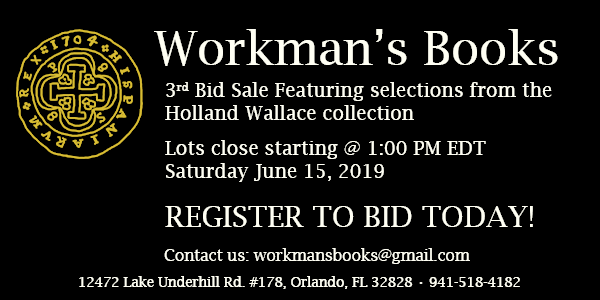
MORE ON THE DANIEL W. VALENTINE MEDAL
Pete Smith submitted these thoughts on the Daniel W. Valentine medal described in Dave Perkins' article last week, Thanks, -Editor
 Stephen A. Crain wrote an article about Daniel W. Valentine for the E-Gobrecht in May of 2005.
Later Steve wrote about his joy in acquiring an example of the New York Numismatic Club medal for Valentine. Steve appreciated Valentine for his
reference book about half dimes.
Stephen A. Crain wrote an article about Daniel W. Valentine for the E-Gobrecht in May of 2005.
Later Steve wrote about his joy in acquiring an example of the New York Numismatic Club medal for Valentine. Steve appreciated Valentine for his
reference book about half dimes.
In 2013, I was a judge for Numismatic Literature at the ANA Convention. There was an excellent exhibit about Valentine that was well deserving of first place. It included an example of the Valentine medal in silver and bronze. The exhibitor had acquired photos and other items from the Valentine family.
I thought the exhibit was probably placed by Crain. When I saw him later I asked him but he did not know who placed the exhibit. As the awards were announced we learned that the exhibitor was Jerry Fochtman. His interest in Valentine was related to the book on Fractional Currency.
Members of the New York Numismatic Club collect the Valentine medal as part of the series of medals issued for club presidents. Mark Anderson is involved with sales of the club medals and keeps track of buyers by serial numbers. He attempted to identify owners of the Valentine medal and the serial numbers for each medal.
I collect tokens and medals issued for numismatists. I did not own a Valentine medal in 2013 but was fortunate to acquire one a couple of years later.
Dave Perkins adds:
The bronze Daniel Valentine medal described in my article last week is from the Stephen Crain Collection. Stephen collected and studied the half dimes for over 35 years and was known to many of us as “Mr. Half Dime.”
Unfortunately Stephen’s health has declined in the last year. W. David Perkins Numismatics will be selling Stephen’s extensive collection of Capped Bust and Liberty Seated half dimes along with his collection of half dime Ephemera.
To read the earlier E-Sylum article, see:
D. W. VALENTINE PRESIDENTIAL MEDAL
(https://www.coinbooks.org/v22/esylum_v22n21a26.html)
LOCAL EXCHANGE TRADING SYSTEM

Jim Bulmer writes:
Regarding the Yukon note in last week's issue, I don't know that particular one (it looks very colourful and attractive), but it is a LETS (Local Exchange Trading System) note, dated 2000. LETS is a 'Time for trade' token program where hours of service are paid instead of money. Programs like these are used around the world, there are several articles on the web, and the program works better in some places than others. It was developed in 1983 by Michael Linton, of Comox BC, and his files now are at the University of Victoria. The LETS system is related to Municipal Trade Token money.
I've long been fascinated by the labor exchange movement and its time-based paper money. The most recent article on the topic was just this April, when the Washington Post covered a Silver Spring, MD time bank and discussed the D.C. nonprofit TimeBanks USA.
Loren Gatch mentioned the LETS system in 2012 and suggested the complementarycurrency.org site. A search there failed to find a Yukon currency. -Editor
To read the complete Wikipedia article, see:
Local exchange trading system
(https://en.wikipedia.org/wiki/Local_exchange_trading_system)
To visit the Complimentary Currency Resource Center, see:
http://complementarycurrency.org/
To read the earlier E-Sylum articles, see:
MORE ON TIME BANKS AND TIME-BASED CURRENCIES
(https://www.coinbooks.org/esylum_v15n38a22.html)
MODERN-DAY TIME BANKS (https://www.coinbooks.org/v22/esylum_v22n17a27.html)
NOTES FROM E-SYLUM READERS: MAY 26, 2019 : Query: Whitehorse, Yukon Local Currency
(https://www.coinbooks.org/v22/esylum_v22n21a18.html)
VOCABULARY TERM: CORROSION
Dick Johnson submitted this entry from his Encyclopedia of Coin and Medal Terminology. Thanks. -Editor
Corrosion. In numismatics the advanced state of metal deterioration beyond tarnish. Iron coins rust, lead medals form a white disease, tin and zinc objects erode, all under different chemical or environmental conditions. The best prevention for corrosion is to lacquer the piece. While this is done for most medals, it is impractical for coins or blanks. The best protection for coins is to choose metal alloys least liable to tarnish or corrode in most environments; these are, obviously, gold, silver and somewhat bronze.
Corrosion is the extensive tarnish or chemical reaction to a metal surface in a detrimental environment. Most coinage alloys tone or darken in time, as copper or bronze ages; should coins and medals be exposed to harsher environment they may form tarnish. Should this detrimental condition persist, it may become corrosion. Should a numismatic or medallic specimen reach this stage it is not worthy, perhaps, to be collectable. It is assumed the detrimental condition is treated long before a specimen can be called corroded. See tone, toning; tarnish.
Looking for the meaning of a numismatic word, or the description of a term? Try the Newman Numismatic Portal's Numismatic Dictionary at: https://nnp.wustl.edu/library/dictionary
Or if you would like a printed copy of the complete Encyclopedia, it is available. There are 1,854 terms, on 678 pages, in The Encyclopedia of Coin and Medal Technology. Even running two a week would require more than 19 years to publish them all. If you would like an advance draft of this vital reference work it may be obtained from the author for your check of $50 sent postpaid. Dick Johnson, 139 Thompson Drive, Torrington, CT 06790.

ROBERT LEE DEITRICK (1870-1938)
 Robert Lee Deitrick (1870-1938), was born on February 11, 1870, in Goochland County,
Virginia, the fourth child of six, son of Dr. Thomas Marion Deitrick, M.D. (1840-1912), and Frances Etta Pollard Deitrick (1841-1925).
Robert Lee Deitrick (1870-1938), was born on February 11, 1870, in Goochland County,
Virginia, the fourth child of six, son of Dr. Thomas Marion Deitrick, M.D. (1840-1912), and Frances Etta Pollard Deitrick (1841-1925).
Deitrick never married and worked at various trades : a telegraph operator, boarding house owner, paint and hardware merchant, and dealer in old newspapers, Civil War relics, paper money, stamps, and coins. He was deeply interested, knowledgeable, and active in all aspects of collecting despite some remarks made by modern numismatic historians who characterize him as mainly a stamp dealer. He lived and worked for the most part in the family home in Tuckahoe, Virginia, and used a mailing address at Lorraine, Virginia.
In 1890, he began selling Confederate paper money publishing his first annual edition of Deitrick's Paper Money Catalogue. He also published a semiannual List of Rare Coins and Fractional Currency, Bought and Sold (1890).
On February 14, 1891, he was appointed Postmaster of Lorraine, Virginia.
Deitrick ran his numismatic business on a shoestring budget. His early correspondence is usually found on recycled paper and other company's defunct unused postal stationery envelopes bought by the box at a fraction of the postage value.


The 1900 U. S. Census reports him living at the family home at 322 Libby Avenue, Tuckahoe, Virginia, and working as a telegraph operator.
He applied to the ANA in July and joined the ANA in November 1909.
The 1910 U. S. Census reports Deitrick as a boarding house owner.
His March 1910 advertisement for Deitrick's Standard Paper Money Catalogue and buying list of United States coins and fractional currency (20th edition) published in The Numismatist was offered at 15 cents.

Deitrick's 1910 letterhead with the Dutch spelling "Neumismatist".
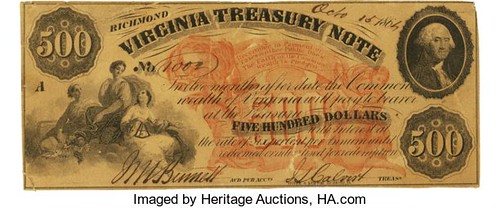
On May 10, 1918, he discovered a rare $500 Virginia Treasury note dated October 15, 1864, writing his discovery in pencil on the blank verso of the uniface note. Abraham Atlas Leve, Syracuse, New York, (q. v.), published it for sale for $50 on consignment in The Numismatist, September (1918), page 399. Apparently, Deitrick made a deal with Leve to sell it since he was an established paper money authority in the ANA, and then split the money. Afterwards Deitrick listed it in his Fixed Price Lists for sale. The 1923 Fixed Price List offered it for $25.00. The note was purchased by Colonel Green and afterwards Eric Newman. The note was never official or authorized. Spain was the first known expert to point out that the note's serial number 1002 and signatures are bogus. Also, all red and black Virginia notes are dated August 13, 1861, not October 15. The bank note was sold by Heritage on April 22, 2015, lot 19378.
 The 1920 U. S. Census reports him living with his mother and brother Frank on the family farm in Tuckahoe, Henrico
County, Virginia.
The 1920 U. S. Census reports him living with his mother and brother Frank on the family farm in Tuckahoe, Henrico
County, Virginia.
In the 1930 U. S. Census he is listed as the owner of Westhampton Paint and Hardware Company, Richmond, Virginia. His residence was at 322 Libby Avenue, Westhampton, Virginia.
He died on Saturday morning at 5:50 A.M., , May 28, 1938, from chronic myocarditis. According to his obituary published in the Richmond Times Dispatch, Sunday, May 29, 1938, page 4, he died "yesterday", i.e., on May 28, 1938, in his home at Westhampton. However, his tombstone is dated the day he was buried.
To read the complete article, see:
DEITRICK, ROBERT LEE
(https://sites.google.com/a/numismaticmall.com/www/numismaticmall-com/deitrick-robert-l)
The entire inventory of the Lupia Numismatic Library is for sale. Individual items will be available before the remaining archives are broken up into parcels sold at philatelic auctions in the U. S. and Hong Kong. Check NumismaticMall.com frequently as dozens of new items with estimates will be posted daily until everything is sold.
All inquiries will be given prompt and courteous attention. Write to: john@numismaticmall.com .
CHICAGO HALL OF FAME INDUCTS LEE F. HEWITT
The Chicago Coin Club has announced the sixth inductee into its Hall of Fame. -Editor
Inducts Lee F. Hewitt Into its Hall of Fame
The Chicago Coin Club announces that the sixth person to be inducted into its Hall of Fame is former author, editor, and publisher Lee F. Hewitt. His Hall of Fame citation has been published on the club’s Hall of Fame web page, www.chicagocoinclub.org/projects/hof .
Twelve Hall of Fame inductees have been selected. Each of the remaining six will be announced at the rate of one per month, July through December, during the Chicago Coin Club’s centennial year, 2019.
The Chicago Coin Club was organized in 1912 as American Numismatic Association Branch No. 1, and reorganized under its present name in 1919. All are invited to join. To become a member you must attend a meeting and submit an application along with a membership fee of $20 ($10 for Junior membership). A first reading of your application will be held at this meeting, and a second reading at the next monthly meeting, following publication of your name in the club newsletter. (You are not required to be present for the second reading.) Upon membership approval, you will become a member.
The Chicago Coin Club holds monthly meetings in downtown Chicago, plus at major numismatic conventions such as Central States, with a speaker featured at every meeting except the annual auction, held at the November meeting.
Here is the text of the Lee F. Hewitt entry. -Editor
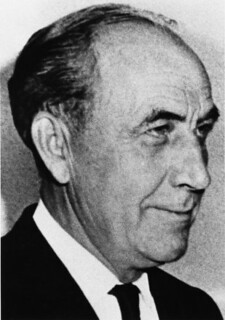 On February 3,
1932, Lee Francis Hewitt joined the Chicago Coin Club as member No. 215. A frequent exhibitor, he provided many services to the Club over the years,
receiving the Club’s Medal of Merit in 1957; he was elected President in 1971.
On February 3,
1932, Lee Francis Hewitt joined the Chicago Coin Club as member No. 215. A frequent exhibitor, he provided many services to the Club over the years,
receiving the Club’s Medal of Merit in 1957; he was elected President in 1971.
Mr. Hewitt (January 1, 1911 – April 15, 1987) traveled with a circus band before joining his brother Clifford in the printing business in the early 1930s. Over his long career he wrote Mint Record of United States Coins (with fellow Chicago Coin Club member C. E. Green), Price Catalog of Hard Times Tokens, United States Numismatic Dictionary (with Ted Weissbuch), Hewitt-Donlon Catalog of United States Small Size Paper Money (with William Donlon), and Nevada Gaming Tokens. In addition to his own works, he reprinted Crosby’s Coinage of 1793 and Newlin’s Early Half Dimes, eventually publishing a number of original booklets in his Hewitt Numismatic Information Series.
In January 1935, Mr. Hewitt founded Numismatic Scrapbook Magazine, originally intended to reprint classic numismatic studies (thus the name). It quickly expanded, added news and original articles, and eventually bulged with advertising. Sold to Amos Press in 1968, it was discontinued by them in 1976. Mr. Hewitt was very instrumental in the revival of proof set issues in 1936. He spearheaded the formation of the Central States Numismatic Society, and received their Medal of Merit in 1959.
Mr. Hewitt was appointed temporary editor of The Numismatist from Sept. 1, 1942 through the end of the year, following the unexpected resignation of Frank Duffield. And in 1943, he was drafted, serving in the Military Police until 1946. Despite these obstacles, neither The Numismatist nor the Scrapbook missed an issue during this time. He received the ANA Medal of Merit in 1950 and the Farran Zerbe Award in 1962. In 1978 he was elected to the ANA Numismatic Hall of Fame.
From time to time pricing mistakes would appear in the Numismatic Scrapbook, due to copy, typographical, or proofreading errors, and readers would flood the advertiser with orders for “bargains,” much to Mr. Hewitt’s annoyance. After repeatedly warning of the possibility of such mistakes, he wrote an Editor’s Note in the January 20, 1958, issue, “No, Virginia, There Isn’t a Santa Claus,” adding, in the June 20, 1959 issue, “Don’t Believe in Santa Claus; At Least Not in the Coin Business,” and occasional later issues under “No Santa Claus” or similar headings. After he sold the magazine, this note became standardized as “There is no Santa Claus in numismatics” — now credited to him.
Tall and dignified, with a deep voice, Mr. Hewitt commanded respect from all. In his obituary in the May 1987 Chatter, Carl F. Wolf, Chicago Coin Club Archivist, wrote: “he was honest and ‘called the shots as he saw them.’… [he] had great powers of concentration and had an outstanding ability to absorb and retain information, which could best be described as an archival memory.”
(Image courtesy of ANA.)
To read the complete article, see:
Hall of Fame – Chicago Coin Club – Member 6 Lee Francis Hewitt
(http://www.chicagocoinclub.org/projects/hof/m06.html)
To read the earlier E-Sylum article, see:
CHICAGO HALL OF FAME INDUCTS M. VERNON SHELDON
(https://www.coinbooks.org/v22/esylum_v22n18a18.html)
IAPN PRESIDENT DANIEL FRANK SEDWICK
This press release announces the new President of the International Association of Professional Numismatists (IAPN). -Editor
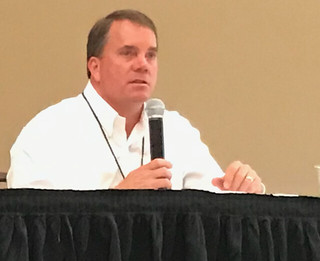 Daniel Frank Sedwick has been sworn in as president of the International Association of Professional Numismatists
(IAPN). His new term began during the annual IAPN congress held May 13-15 in Carefree, Arizona.
Daniel Frank Sedwick has been sworn in as president of the International Association of Professional Numismatists
(IAPN). His new term began during the annual IAPN congress held May 13-15 in Carefree, Arizona.
Sedwick is the owner and founder of Daniel Frank Sedwick, LLC. He has worked as a professional numismatist since 1989 and has been hosting coin auctions since 2007.
He was elected without opposition to a two-year term. Prior to that, Sedwick served two years in the organization’s executive committee. He also chairs the IAPN’s committee on international trade.
“The IAPN embodies the highest standards and ethics among international coin dealers,” said Sedwick. “It is an honor to lead such a venerable organization in the fight for free trade in numismatics.”
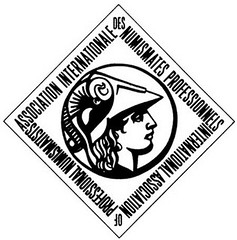 The IAPN was founded
in 1951 in Geneva, Switzerland. Today, more than 90 numismatic firms are in membership, located all over the world. Every member must agree to a code
of ethics the organization developed to provide for the protection and preservation of numismatic heritage. The association pursues projects
dedicated to the advancement of numismatics such as anti-counterfeiting, government relations, international numismatic trade, and promoting
numismatic research.
The IAPN was founded
in 1951 in Geneva, Switzerland. Today, more than 90 numismatic firms are in membership, located all over the world. Every member must agree to a code
of ethics the organization developed to provide for the protection and preservation of numismatic heritage. The association pursues projects
dedicated to the advancement of numismatics such as anti-counterfeiting, government relations, international numismatic trade, and promoting
numismatic research.
For more information on IAPN, see:
https://www.iapn-coins.org/
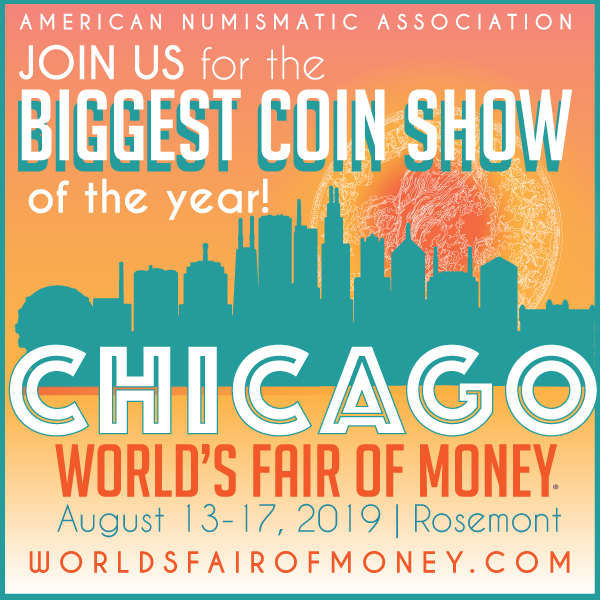
HARVEY STACK'S NUMISMATIC FAMILY, PART 45
Harvey Stack's blog series focuses on living in a numismatic family. Here is part 45. Thanks, Harvey. -Editor
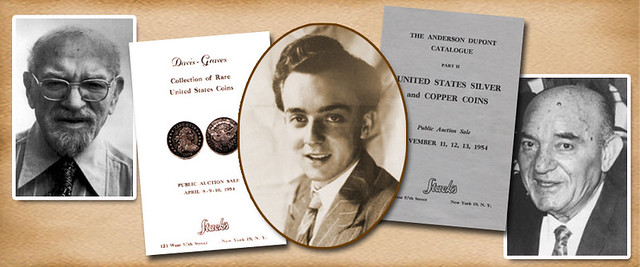
To begin my story about 1967, I return to our lawsuit against the Treasury challenging its rulings about importing gold coins. In early January the hearing judge came back with an opinion that we were correct in asking for a repeal of the Gold Coin Import License. We were very happy, but the Treasury Department’s Office of Gold and Silver Operations (OGSO) was not. A day or so after the judge's ruling came down, the OGSO delivered a document to our attorney that said: “Notwithstanding the rulings of the hearing judge, application for the license is denied.”
We were shocked. We went through the entire hearing and won the case and still we were denied a license. As our attorney explained it to us, the Government Office by their denial were making us appeal to a higher court. We said we would like to continue, and our lawyer began the process of filing an appeal stating that the OGSO was being "arbitrary and capricious."
About a week later, the OGSO sent an answer to our lawyers, in effect suggesting that we should not pursue the case as they were working on some changes. Our lawyers advised us to hold back from further action which we did.
However, our client in the Netherlands got very sick, and could not wait any longer. He decided to sell the collection overseas where no rulings would delay it. We were heartbroken but understood that his health was more important than his desire to have Stack’s sell his coins in America. We appreciated that he had waited as long as he had.
During late spring 1967, the Professional Numismatic Guild (PNG) had a meeting during a New York Convention where a member of the OGSO delivered a talk to the membership. At the meeting, an under director of the OGSO explained why regulations were put into force and the results that had come from the regulations. Then he announced that as the intent of the import regulations had been satisfied, licenses would no longer be required for genuine gold coins dated before 1933 to be imported into the United States.
So Stack’s had succeeded in its goal of ending the requirement for export licenses. Unfortunately we had lost the collection that had motivated us to go into battle in the first place, as the delay in getting to this point was just too extensive. We did get a rousing cheer from the PNG membership!
After this final ruling, our buying and receiving from overseas was easier again, and we could better serve our clients in building and selling their collections.
To read the complete article, see:
Harvey Stack Remembers: Growing up in a Numismatic Family, Part 45
(https://www.stacksbowers.com/News/Pages/Blogs.aspx?ArticleID=3390)
To read the earlier E-Sylum article, see:
HARVEY STACK'S NUMISMATIC FAMILY, PART 44
(https://www.coinbooks.org/v22/esylum_v22n20a17.html)
THE MASSACHUSETTS PINE TREE COPPER
The June 2019 issue of the Journal of Early American Numismatics (JEAN) includes an article by E-Sylum contributor Julia Casey about the enigmatic 1776-dated "Pine tree copper" -Editor

Editor Christopher R. McDowell writes:
It is widely believed in colonial numismatic circles that the 1776 Mass. Coppers are mid-19th century fakes. This was my opinion for many years. Julia’s article challenges this groupthink. Julia’s article is built around a recently discovered English newspaper article from 1776 that may or may not mention the 1776 Massachusetts coinage. Julia does not just take the newspaper story at face value, but digs deep to discover where the story originated, leading to the discovery that it came from a Tory passenger on a ship out of Boston. With this as a springboard, Julia studies every aspect of the coinage to determine when and where it was actually minted. A reexamination of the 1776 Mass. Copper coinage is long past due. For too long we have just accepted rumor and opinion for fact, Julia’s article gives us a whole new way to look at the subject.
With permission, here is a short excerpt from the article. -Editor
The 1776 dated Pine Tree copper of Massachusetts has been a numismatic mystery since it was first discovered in the mid-nineteenth century. Study of the Pine Tree copper along with the design-linked “Indian” and “Janus” coppers has suffered from a lack of contemporary documentation of production.
In recent years, there have been unpublished rumors and skepticism concerning the origins of these coins. The purpose of this paper is to introduce a contemporary newspaper account supporting the existence of the Pine Tree copper in 1776. Furthermore, there will be a discussion and investigation of the early provenance of the 1776 Pine Tree copper in order to restore it to its rightful place as a quintessential American Colonial-era coin.
In this analysis, the focus will be on the 1776 Pine Tree copper coin. This coin, however, cannot be properly examined without also looking at the Janus and the Indian coppers as the origin of all three coins is most likely the same Boston workshop in the summer of 1776.
The three coins of the Massachusetts copper series of 1776, each presently unique, have been linked by associated reverse designs of a “Goddess of Liberty” figure. The coins also share a similar appearance in die preparation, placement of design and legends, as well as apparent minting standards. Several scholars in the past have agreed that these coins were produced at the same minting establishment.
For more information on JEAN, or to order, see: http://numismatics.org/store/cnl/
DAVE WNUCK'S COIN MARKET PREDICTIONS
Dave Wnuck's Making The Grade email newsletter is always a welcome addition to my inbox. Issue #42, published May 20, 2019 features his "What Will the Coin Market Be Like 10 Years From Now?" article. I added a graphic from a 2014 Wall Street Journal blog article. -Editor
 Time for my annual “Coin Hobby Trends for the Next 10 years” article. OK -- so I’ve never done one of these
before. Well, here goes the First Annual Edition... ?
Time for my annual “Coin Hobby Trends for the Next 10 years” article. OK -- so I’ve never done one of these
before. Well, here goes the First Annual Edition... ?
It seems to me that right now the coin market is at an inflection point. So much so that predicting we are in for “more of the same” over the next 10 years would likely be well wide of the mark. So let me dust off the ol' crystal ball and get down to predict-er-ing.
The flood of information available to collectors means a more educated collector
The most frequent complaint I hear from my fellow coin dealers these days is – “Everybody now knows exactly what I paid for my coins.”
You see, not too long ago it was difficult to find prices realized for coins sold at auction. You could do it, but it required a good, up-to-date library and some time. Then Heritage came along and provided that info instantly. But that was only true of the coins auctioned at Heritage. If a coin was purchased at any one of the other auction companies, it was still difficult to find.
Next PCGS came along with their CoinFacts.com website. It provided information on some other auction company prices realized, later all of them, and later still a smattering of eBay auction prices realized too.
PCGS used to charge a monthly fee for this info, and it was well worth it. But then they went a step further and made it free to everyone. Now everyone has access to all that valuable info at absolutely no cost.
Let me tell you a little secret: coin dealers hate this. I mean HATE - HATE - Double HATE this. But – the smartest of them learned to adapt to this advancement and move on.
What might be bad news for dealers is very good news for collectors though. With a few keystrokes, anyone can now find when many of the coins being offered to you were sold at auction and how much they sold for. Also, you can easily find what coins in the same grades and in nearby grades have recently sold for. That information would have taken hours to compile 5 or 10 years ago, and that assumes one had access to all of the different auction catalogs and their prices realized.
In the long run of course, an educated collector is the best asset a coin dealer could have. That is, if the dealer was running his or her business honestly and transparently to begin with. The dealers that cannot adapt to this new information-rich era will struggle and likely fall by the wayside. And that is the way it should be.
Sadly, the number of coin shops will continue to decline.
Quaint little coin shops, once ubiquitous in small town and rural America, will all but disappear. The shrinking population base of these areas,
coupled with high commercial rents and a persistently weak economy, will make it impossible for most of these physical stores to survive. Within the
next 10 years, this process will be nearly complete.
Yes, there will still be some physical coin shops serving large metro areas, although far fewer than in years past. And thrift and secondhand stores will persist as well. But the bulk of coin transactions will take place on the internet via eBay, the auction company websites, collectors.com, dealer websites and so on.
Areas like Proof & Mint Sets, Modern Commems, etc will Continue to Soften
Promotion-driven areas like these, along with other promoted areas like generic gold type coins, will continue to soften from their already depressed
levels. Too much supply chasing inadequate demand.
Some 20th Century Scarcities and Rarities will Continue to Impress
Certain items that have genuine scarcity or rarity (such as the recent sale of a 1964 Kennedy Half Dollar from an experimental Special Mint Set that
just sold for $108,000) will no longer be seen as oddities when they sell for big bucks, as they will occur more frequently (though truth be told, I
am still a little freaked out that a 1964 Kennedy Half dollar of any kind could sell for $108k).
There are many traps here too though. Common coins in "super grades" (MS67 red common date Lincoln cents, for example) will continue to be slabbed, as the unslabbed supply of those coins are enormous. That will drive down the prices of coins where, for example, a PCGS MS67 Red graded coin sells for $4000 and an MS66 Red example sells for $50. That's insane.
Coin Shows Will Shrink in Number and Become Wholesale Affairs
Many of the remaining major coin shows are being propped up by the auction companies, by holding their sales at those venues. As a good customer (who travels to several national shows each year) explained to me at the recent EAC show in Ohio – “I’m going to travel to fewer shows from now on. I plan my trips carefully and shop for the best travel deals, but it still costs me $2000 or so on average to attend a coin show – some more, some less. I can buy a nice coin for $2000 sitting at home, and be ahead of the game.”
It is hard to argue with that logic.
The collectors who currently attend shows tend to skew older, white and male. But don’t despair, my friends. I spoke to a dealer who sells virtually all his coins on Facebook, his website and other internet outlets and attends maybe 3 shows per year.
He said the customer mix he sees at shows are very different from those in his business. He said the majority of his online customers are 18-45 years old, and about 30% are female. My own experience with my online sales has been similar. People love collecting coins, if only they are exposed to them.
To read the complete article, see:
What Will the Coin Market Be Like 10 Years From Now? (http://www.davewcoins.com/newsletter)
An educated collector is indeed the best collector, one who will most likely stay in the market long term. The proliferation of online data sources benefits everyone, except for the dealers who market to the shrinking number of uneducated or lazy collectors. But there are always new frontiers - areas of the market which haven't yet been made transparent. These provide continual opportunities for entrepreneurial collectors, dealers and researchers alike.
I'm more optimistic on the future of coin shows and shops. The short history of the internet shows that in time markets tend to converge on a "clicks and bricks" model - online retailers open shops to gain a physical presence while physical stores expand online. Of course, Dave's not saying shows and shops will disappear. I think we're both saying that they will morph into new forms. And perhaps NONE of the coin business founded in the pre-internet era will thrive - there is a lot of opportunity to serve today's collector's in the time, place and manner they most prefer. Shows and shops that don't adapt in time will fade away. -Editor
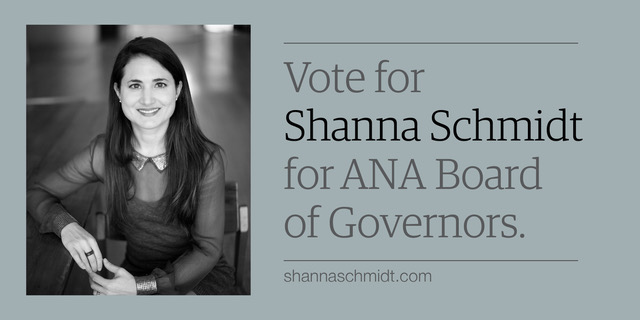
WHEN INSTITUTIONS FAIL: PART I
Here's another article on the future of our hobby. The May/June issue of Paper Money, the official publication of the Society of Paper Money Collectors contains the first of a two-part series of articles by Loren Gatch titled "When Institutions Fail". With permission, we're republishing it here. And yeah, I added that meme for grins. -Editor
 Next to my
office desk is a book shelf, and on the very top sits a haphazard pile of old red books—literally, “Red Books”, or Guide Books to United States
Coins, by one R. S. Yeoman. Rather than residues of my misbegotten youth, these volumes I got at some library book sale, and then promptly ignored.
Inspired (or at least made to feel guilty) by Marie Kondo’s decluttering philosophy, I’ve been casting an appraising eye around my office, asking the
Kondo question: Does anything in this room, books or otherwise, “spark joy?” And the answer is, I have absolutely no idea, unless you find joy, as I
do, in the act of hoarding itself.
Next to my
office desk is a book shelf, and on the very top sits a haphazard pile of old red books—literally, “Red Books”, or Guide Books to United States
Coins, by one R. S. Yeoman. Rather than residues of my misbegotten youth, these volumes I got at some library book sale, and then promptly ignored.
Inspired (or at least made to feel guilty) by Marie Kondo’s decluttering philosophy, I’ve been casting an appraising eye around my office, asking the
Kondo question: Does anything in this room, books or otherwise, “spark joy?” And the answer is, I have absolutely no idea, unless you find joy, as I
do, in the act of hoarding itself.
As a publishing venture, the “Red Book” is, of course, alive and kicking, even if Richard S. Yeoman himself has been gone for over thirty years. More than a mere book, the Yeoman volume is a fixture of the hobby. It’s what I would call an institution, in the sense that it orients collectors around a list of desirable objects and their possible prices. It may not be the most informed authority on specialized numismatic topics, but in one volume it represents the best general introduction to the hobby in the United States. In particular, the Red Book signals to those people, young and old, who’ve not yet taken up the pastime: this is what collecting United States coins is all about.
The importance of institutions like the Red Book appears most apparent when I imagine what would happen to the hobby if that volume somehow went away. Two recent developments more relevant to the paper money field raise similar issues. The first is the Chapter 11 bankruptcy filing of F + W Media, while the second is the demise of PCGS Currency, a major third-party grader of paper money. Both are examples of institutions failing. I want to discuss the publisher in these paragraphs, and the grader in a subsequent column.
F + W Media is, of course, the company that had acquired Krause Publications in 2002. Whether because of bad luck, bad strategy, or bad management, F + W Media has failed, and the status of its stable of collector-oriented publications is now in doubt. This includes such stalwarts as Numismatic News, Bank Note Reporter, and of course the various volumes of SCWMP.
We don’t yet know what bankruptcy will mean for these brands. Chapter 11 could bring the reorganization, sale, or outright liquidation of F + W’s properties. No one publication is necessarily indispensable, but the Krause catalogs come closest to representing a collective benefit to the hobby. It’s not their prices that are important (these change); it’s the reference and attributive functions that these catalogs provide. In particular, the “Pick numbers” that the Krause catalogs record for existing notes, and generate for new issues, literally define the hobby in the sense that they guide readers towards what to collect in the first place.
While there might be better alternatives to the Pick scheme, what makes it valuable is that everyone treats it as authoritative. Up to now, the Pick numbering system has outlived Albert Pick, Just as Friedberg numbers have outlived Robert Friedberg. Hugh Shull built on the system created by Grover Criswell. Yet if such continuity were to be interrupted, I fear that a basic support for the hobby would begin to erode.
I don’t want to sound hysterical about the problem. Paper money collecting has all sorts of niches that have generated plenty of guide books to orient their fans. Auction house catalogs also play a role, particularly when it comes to the attribution and provenance of pricier stuff. Organizations like the SPMC do their part by crowdsourcing online compendia like the Obsoletes Database Project.
It makes a difference if a catalog covers material that is specific to an historical era. Stale catalogs are still perfectly serviceable if the type of collectible is, in principle, fixed. As a long-time devotee of depression scrip, I rely on the Mitchell-Shafer catalog even though it is well over thirty years old. Its prices are now irrelevant, but the context and attributions it provides are still indispensable. But what about parts of the hobby that are more dynamic, and require up-to-date revisions? The various Krause catalogs serve to assimilate the flood of new coin and currency issues that the world generates every year. Each item gets its number, and each one of those numbers in a sense defines and extends the boundaries of the hobby for the benefit of all collectors. If that service were no longer provided, then the enterprise of collecting would, ever so slightly, begin to lose its focus. And the longer that service wasn’t there, the fuzzier would everything notaphilic appear to be.
A little scary, isn't it? We all grow accustomed to familiar institutions, be they organizations, conventions, books, publications or web sites. What would we do if they were gone? -Editor
For more information on the Society of Paper Money Collectors, see:
https://www.spmc.org/
AMERICA: A NATION OF CLUBS
Another institution important to our hobby is the local club. This article discusses the history, place and decline of clubs in America, and how they're making a comeback of sorts. -Editor
AMERICA: A NATION OF CLUBS
Until recently, American social life has revolved around small groups of people brought together by similar social interests, much like Monty’s many
clubs. Some asked members to pay dues, but in many cases–like the Sherlock Holmes club and DeMolay–the fees were modest and served primarily to
support the operations. Many were entirely free. And many believe they had an important role to play in American society.
“These organizations were important to American democracy because they were democratic in their internal governance,” says Peter Levine, a professor of political science at Tufts. “They were local, but they were also federated so they brought America together. They were gender and race segregated as a whole, but they went across class, creating cross-class solidarity.”
As Levine points out, while the clubs of the past brought together people of different socioeconomic backgrounds, they were exclusionary in many other ways. Many clubs were gender segregated based on stereotypes about masculinity and femininity: Men tended to be in business organizations, while women were part of quilting and charity clubs, then later in suffrage groups. And, until the 1960s, clubs tended to be racially segregated. For instance, minorities were very literally excluded from business clubs that were historically white, making it impossible for them to create the kinds of networks that would be valuable for career advancement.
Over the last few decades, sociologists and political scientists have found that American clubs of all stripes–from youth service clubs to bowling leagues–have experienced steep declines in their memberships.
Meanwhile, a new kind of club is rising up in major cities. These are stylishly designed, members-only spaces that often come with a high price tag, thereby limiting membership to the wealthy and privileged.
In other words, there are fewer clubs that bring together people of different socioeconomic backgrounds across the country and a growing number that are designed for a class of digitally native, urban professionals. All of this is changing the social landscape of the United States. What accounts for the sharp decline in traditional clubs and organizations? How will this new breed of elite club change American society? And perhaps most importantly, is there a way to bring back free, or inexpensive, clubs that will allow more Americans to participate in communities and engage civically?
BRINGING BACK THE COMMUNITY CLUB
Many political scientists say that the withering of America’s clubs and associations makes the country worse off. It means that fewer people are
embedded in a community, which is known to help people feel happier and even live longer. But it also makes our nation worse off because people
become increasingly siloed and removed from those who are unlike them. While this new breed of social club is actively trying to be inclusive when it
comes to race, gender, and sexual orientation, they are still segregating people by social class.
Theda Skocpol, the Harvard political scientist, believes that to create a better society we need to break down some of these class lines. “One answer to improving the nation’s civic life will turn out, I believe, to lie in encouraging privileged Americans to rejoin–or recreate–the group settings in which they have a daily chance to work with a broad cross-section of fellow citizens to address the nation’s concerns,” she writes in the Brookings Review.
The complete article is available online and well worth reading in full. -Editor
To read the complete article, see:
Social clubs died out in America. Now,
venture capital is bringing them back (https://www.fastcompany.com/90350407/the-death-and-unlikely-rebirth-of-the-american-social-club)
NUMISMATIC NUGGETS: JUNE 2, 2019
Here's a selection of interesting or unusual items I came across in the marketplace this week. Tell us what you think of some of these. -Editor
1886-S Victoria Gold Sovereign

VICTORIA 1886 S SOVEREIGN, SHIELD REVERSE
Victoria (1837-1901), gold Sovereign, 1886 S, Sydney Mint, young filleted head left, W.W. raised on truncation for engraver William Wyon, date below, Latin legend and toothed border surrounding, VICTORIA DEI GRATIA, rev. crowned quartered shield of arms, laurel wreath surrounding, emblems below, Latin legend and toothed border surrounding, BRITANNIARUM REGINA FID: DEF:, S mint mark below ties, weight 8.00g (Bentley 671; McD 139; Marsh 82; S.3855). Toned, just a few light marks, extremely fine.
Calendar year mintage 1,667,000 including St George reverse.
The Latin legends translates on obverse as "Victoria by the Grace of God," and on the reverse "Queen of the Briton's, Defender of the Faith."
Nice coin. From Ian Goldbart's Sovereign Rarities Ltd site. -Editor
To read the complete lot description, see:
VICTORIA 1886 S SOVEREIGN, SHIELD REVERSE
(https://www.sovr.co.uk/coins/victoria-1886-s-sovereign-shield-reverse-di09359.html)
c1890-1895 50 Cents Token
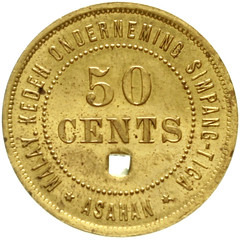
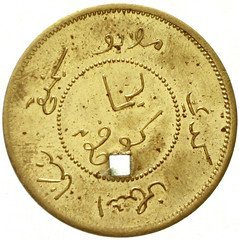
50 cents tokens brass oJ (1890/1895). Usual square debacle hole. excellent / gloss, rare
from the Teutoburger Münzauktion site. Fascinating token, although I have no idea what this is - the lot description is sparse. Google translate was of little help with the inscription: "MALAY KEDEH ONDERNEMING SIMPANG-TIGA ASAHAN" Anyone know what this is? -Editor
To read the complete lot description, see:
50 cents tokens brass oJ (1890/1895). Usual square debacle hole. excellent /
gloss, rare (https://www.teutoburger-muenzauktion.de/de/lose/9269-A123-839/)
1893 Barber Dime, Toned

1893 Barber Dime. NGC graded MS66 Plus Star.
An insanely toned Barber dime. MS-66 with a plus and a star. Can get too many more bells and whistles on the NGC label, and justifiably so. PCGS #4800. $2950
From the stock of Dave Wnuck. Agreed - I love the toning on this piece. Beautiful. -Editor
For more information, or to order, see:
http://www.davewcoins.com/store/p690/1893_Barber_Dime
._NGC_graded_MS66___Star..html
1936 Off-Center Buffalo Nickel

1936 Buffalo Nickel. PCGS graded MS62. 15% Off center. Surprising and neat. PCGS #E3977.
Another from the stock of Dave Wnuck. Can I get away with saying Dave's a little off-center himself? But in a good way... -Editor
For more information, or to order, see:
http://www.davewcoins.com/store/p689/1936_Buffalo_Nickel
._PCGS_graded_MS62._15%25_Off_center..html
1914 German Occupation silver Satirical Medal
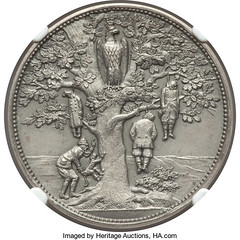

Kiau Chau. German Occupation silver Satirical Medal 1914-Dated MS66 NGC, Zetzmann-4062 (RRR). Presently the finest certified Mint State specimen of this highly collectible medal produced to commemorate the defence of Kiau Chau against the Japanese, the present piece showcases a soft, matte-like texture completely lacking in flaws.
An extremely rare WWI silver propaganda medal. Mike Dlugosz's consignment to the Heritage Hong Kong Signature Sale. -Editor
To read the complete lot description, see:
China: Kiau Chau. German Occupation silver Satirical Medal 1914-Dated MS66 NGC,...
(https://coins.ha.com/itm/china/kiau-chau-german-occupation-silver-satirical-medal-1914-dated-ms66-ngc-zetzmann-4062-rrr-presently-the-finest-ce/a/3074-31027.s)
1945 Book on Coins, Medals, and Seals of Iran

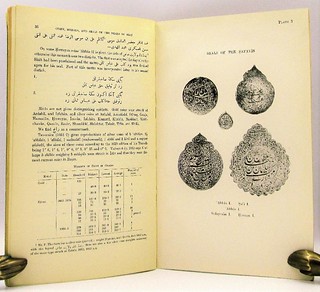
Title: Coins, Medals, and Seals of the Shahs of Iran, 1500-1941
Publisher: Stephen Austin and Sons
Publication Date: 1945
Binding: Paperback
Book Condition: Used: Good
Found on AbeBooks.com. -Editor
To read the complete lot description, see:
Coins, Medals, and Seals of the Shahs of Iran, 1500-1941
(https://www.abebooks.com/servlet/BookDetailsPL?bi=30335277418)

ARCHIVES INTERNATIONAL AUCTION #53 HIGHLIGHTS
Here are some highlights of the upcoming June 20, 2019 auction from Archives International. -Editor
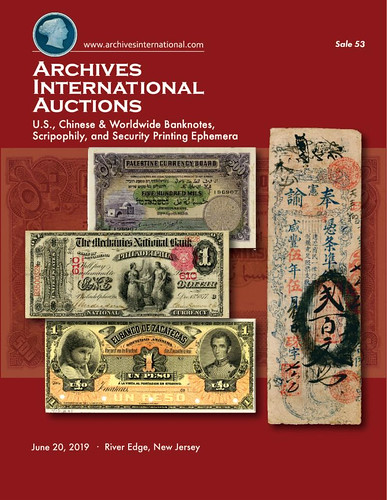
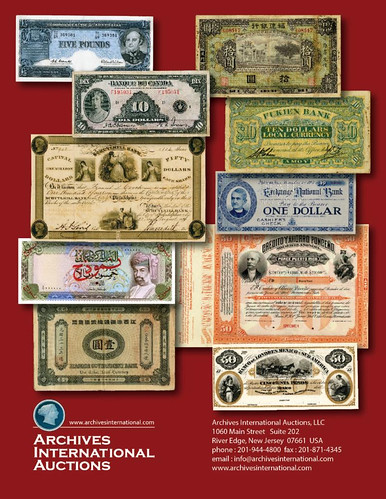
For live bidding, see: https://auction.archivesinternational.com/AIA-Sale-53-U-S-Chinese-Worldwide-Banknotes-Scripophily-and-Security-Printing-Ephemera_as59129
To view the virtual catalog, see: https://archivesinternational.auctioneersvault.com/catalog/Archivessale53/
Lot 103: 1907 China Kiangse Government Bank Note

China, $1, P-S1083, S/M#C94-1, Issued banknote, Black and blue, back black with red seal, PMG graded Very Fine 20 condition with large even margins, firm paper and no edge faults, Rarely seen this nice. S/N703, Attractive and desirable banknote. Printer: CMPA.
To read the complete lot description, see:
Kiangse Government Bank, 1907 Dollar
Issue Banknote. (https://auction.archivesinternational.com/Kiangse-Government-Bank-1907-Dollar-Issue-Banknote_i33445857)
Lot 115: China $10 Fukien Bank Amoy Branch

Amoy, China. $10, P-S1440a, S/M# S/M#F31-13a, Issued banknote, gray-brown on green and m/c, gateway at center, back in English, Light blue on light yellow, S/N E08517, PMG graded Very Fine 25 NET with note of light rust spots and annotation on right front margin. Rare note in any format and condition and the first time offered by our firm.
To read the complete lot description, see:
Fukien Bank, ND (ca.1910-20)
"Amoy Branch" Issued Banknote.
(https://auction.archivesinternational.com/Fukien-Bank-ND-ca-1910-20-Amoy-Branch-Issued-Banknote_i33445869)
Lot 403: Banco Occidental de Mexico 1000 Pesos Proof Pair
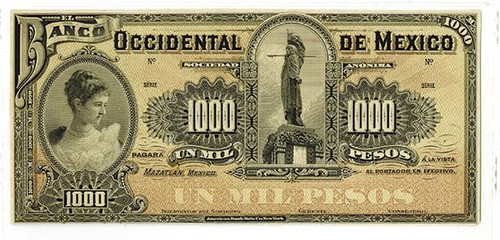
Mazatlàn, Mexico. ND (ca. 1900), 1000 Pesos, NS, P-S414p1 and p2, M501p, Proof face and back printed on india paper, black on gold and m/c, woman at left, monument of Cuauhtemoc at center, back brown, The face is PMG graded About Uncirculated 50 and the back is Choice Uncirculated 63, rare and attractive high denomination note. ABNC.
To read the complete lot description, see:
Banco
Occidental de Mexico ND (ca. 1900) 1000 Pesos Face and Back Proof Pair.
(https://auction.archivesinternational.com/Banco-Occidental-de-Mexico-ND-ca-1900-1000-Pesos-Face-and-Back-Proof-Pair_i33446157)
Lot 416: Central Bank of Oman Specimen

Oman. Specimen 50 Rials, 1977, P-21s, s/n A1 000000 345, PMG Gem Uncirculated 65 EPQ.
To read the complete lot description, see:
Central Bank of Oman. ND (1977).
Specimen Banknote. (https://auction.archivesinternational.com/Central-Bank-of-Oman-ND-1977-Specimen-Banknote_i33446170)
Lot 531: $500 New Hampton College Bank Currency

New Hampton, New Hampshire, $500, Issued and cancelled college currency obsolete banknote, Black on light green underprint with large red seal at center left, Arms at left with Washington and allegorical woman, small eagle on bottom, Hand written signature of the president wit 3 small POC's, back green with denomination and text "Uncurrent except in the New Hampton college Bank", VF with a couple of toning spots and 2 small edge tears. Rare college currency location and school. J & H Buffords Sons, Boston.
To read the complete lot description, see:
New Hampton
College Bank, ND (ca.1860-70's) $500 College Currency Rarity.
(https://auction.archivesinternational.com/New-Hampton-College-Bank-ND-ca-1860-70-s-500-College-Currency-Rarity_i33446285)
Lot 547: $1 Philadelphia, PA. Mechanics National Bank Note
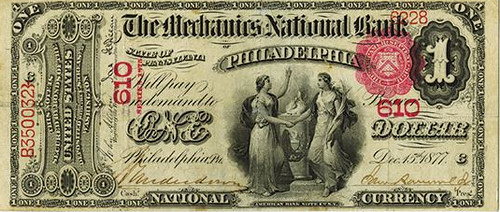
Philadelphia, PA. 1875, $1, Red Seal, Fr#385, S/N B350032 / 6228 ppC, PMG graded Very Fine 25 with note of minor repairs and very small pin holes.
To read the complete lot description, see:
Philadelphia, PA.
Mechanics National Bank. 1875, $1, Fr#385, Ch#610, Issued Banknote.
(https://auction.archivesinternational.com/Philadelphia-PA-Mechanics-National-Bank-1875-1-Fr-385-Ch-610-Issued-Banknote_i33446301)
Lot 560: $1 Atchinson, Kansas 1907 Panic Scrip
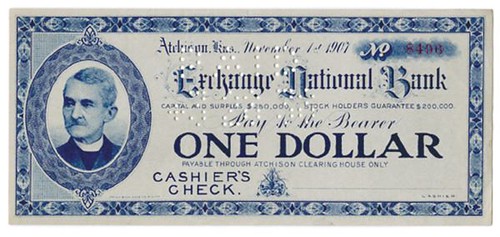
Atchinson, Kansas, November 1st, 1907. $1 Issued and pin-punch cancelled scrip note. Blue on light gray paper, Kansas Portrait of distinguished gentleman at left, blank back, S/N 8496, AU to Uncirculated condition. Rare 1907 Scrip note, Union BNC, K.C., MO. First time seen by cataloger.
To read the complete lot description, see:
Exchange National Bank, 1907
Cashier's Check Panic Currency.
(https://auction.archivesinternational.com/Exchange-National-Bank-1907-Cashier-s-Check-Panic-Currency_i33446314)
GIRL FINDS ABBASID DYNASTY GOLD DINAR
Howard Berlin forwarded this Times of Israel article about a fourth-grader's 9th century gold coin find. Thanks. -Editor
 A ten-year-old girl experienced the thrill of being an archaeologist when she spotted something sparkling
during an educational dig on Thursday and discovered a ninth century gold coin.
A ten-year-old girl experienced the thrill of being an archaeologist when she spotted something sparkling
during an educational dig on Thursday and discovered a ninth century gold coin.
Shira Sofer, a fourth-grade student at the Bachar Rousseau school in Tzur Moshe, near Netanya in central Israel, is one of hundreds of children taking part in a Lev HaSharon Regional Council archaeology program.
They are working at a village from the Byzantine and Early Islamic periods (the Talmudic and Geonic period, 5th to 11th centuries CE), among excavations that have revealed dwellings along with the everyday objects owned by their ancient owners, such as pottery, glass, coins and weights.
“I saw something sparkling so I just picked it up,” said Sofer.
Archaeologist Achia Cohen-Tavor of Dagesh Archaeological Tourism, who is managing the excavation on behalf of Ariel University, said, “This is a coin minted by one of the caliphs of the Abbasid dynasty from Baghdad, who then ruled the Land of Israel, and they made one dinar, about 4 grams of gold, and it is probably dated to the end of the ninth century CE.”
To read the complete article, see:
Fourth-grader unearths 9th century gold
coin during educational dig (https://www.timesofisrael.com/fourth-grader-unearths-9th-century-gold-coin-during-educational-dig/)
COIN HOARD OF ALFRED THE GREAT AND CEOLWULF II
Finders of coin hoards in Britain must report them to authorities. Most people duly comply and are ultimately rewarded, sharing the market value with the property owner. But some are still tempted to keep the booty for themselves, robbing archeologists and museums of the chance to study the finds. Philip Mernick forwarded this article from the Independent about a Viking hoard recently seized in a police raid. -Editor
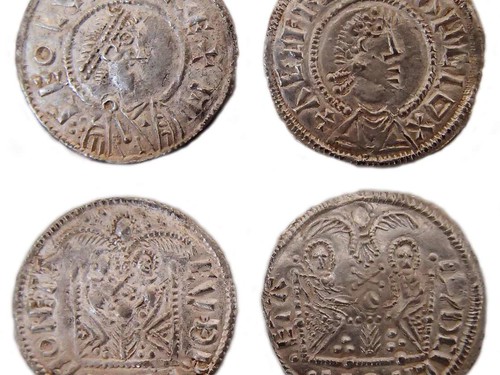 A haul of Viking coins
worth £500,000 uncovered during a police raid could “change British history”, according to a leading historian.
A haul of Viking coins
worth £500,000 uncovered during a police raid could “change British history”, according to a leading historian.
Police seized the hoard of coins and a solid silver bar from properties in County Durham and Lancashire during an investigation.
The items, believed to be of major historical significance, include coins from the reign of Alfred the Great, King of Wessex, and his less well-known contemporary Ceolwulf II of Mercia. King Alfred inflicted a major defeat on the Vikings in AD 878 and experts from the British Museum believe the coins belong to an undeclared hoard consistent with the location of the Viking army at that time.
The hoard is important because it fills a gap in the understanding of history at that time.
Until now, accounts have suggested Ceolwulf of Mercia was a puppet of the Vikings and a minor nobleman rather than a proper king.
However, the coins tell a different story and show two rulers standing side by side as allies.
DI Lee Gosling, senior investigating officer for Operation Fantail at Durham Constabulary, said: “We are in the very early stages of what is going to be a very long and complex investigation.
“We believe the material recovered comes from a hoard of immense historical significance relating to the Vikings and we are delighted to have been able to hand it over to the British Museum.
To read the complete article, see:
Hoard
of Viking coins seized during police raid could ‘change British history’
(https://www.msn.com/en-gb/news/uknews/hoard-of-viking-coins-seized-during-police-raid-could-change-british-history/ar-AACd3Dh?ocid=spartanntp)

THE 1899 PANAY REVOLUTIONARY CENTAVO
In his Stack's Bowers blog article published May 29, 2019, Kyle Ponterio discusses a rare Philippine numismatic item. -Editor

This week's featured highlight from our upcoming official American Numismatic Association (ANA) World's Fair of Money auction, to be held in Rosemont, Illinois from August 13-16, is an extremely rare turn-of-the-century revolutionary issue with few surviving examples.
PHILIPPINES. Panay. Centavo, 1899. NGC AU-55 Brown.
After the Spanish-American War, the Filipinos did not want to trade one monarchy for another. Revolutionary forces that fought beside the Americans began to turn, and in early 1899 the Philippine-American War began, lasting more than three years until its official conclusion on July 4, 1902. While little is known about this revolution coinage, famed Filipino author and collector Aldo P. Basso states that these are undoubtedly unofficial issues related to the insurgency movement.
The obverse features a helmeted solider with legend "REPUBLICA FILIPINA 1899" around, while the reverse depicts a sun within a triangle and a surrounding legend that reads "UNO CENTAVO PANAY." The surfaces on this lovely piece are very well-preserved and showcase a strong strike, full legends and attractive chocolate-colored patina throughout.
This is just one of many fantastic numismatic treasures already consigned to the coming August 2019 ANA auction. The sale will offer a particularly robust offering of Philippines types from the Spanish and American periods, which includes selections from the Ray Czahor collection (Errors and modern Patterns) as well as other coins, paper money and medals.
To read the complete article, see:
Highly Sought-After Panay Revolutionary Centavo
(https://www.stacksbowers.com/News/Pages/Blogs.aspx?ArticleID=3394)
1966 VIP UNCIRCULATED COIN SET MYSTERY
On his web site Andrew Crellin of Sterling & Currency in Fremantle, Western Australia published an article about an interesting 1966 Australian VIP Uncirculated coin set discovered in South Africa. Here's an excerpt - be sure to read the complete article; it's an interesting modern research story. -Editor
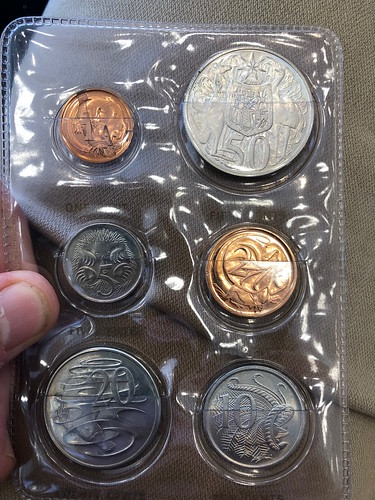 Australia’s switch to a decimal currency in 1966 was a cause for widespread celebration - not only
did the nation now have coins and notes that featured uniquely Australian designs, the government had successfully planned and executed one of the
largest national infrastructure projects undertaken since the Second World War.
Australia’s switch to a decimal currency in 1966 was a cause for widespread celebration - not only
did the nation now have coins and notes that featured uniquely Australian designs, the government had successfully planned and executed one of the
largest national infrastructure projects undertaken since the Second World War.
One of the ways Commonwealth Government officials demonstrated their pride was by presenting sets of the new coins as diplomatic gifts to influential dignitaries that were either visiting Australia or were being visited overseas.
1,000 special “VIP” wallets were produced by Admiral Plastics solely for this purpose - the colour of the vinyl used for the outer sleeve was different to those that were sold to collectors; the printed text on the front of the wallet was also different, as was the configuration of the clear plastic sleeve that contained the coins. The wallets were stored in a locked cupboard within the Mint, access to them was restricted to only the most senior RAM staff.
RAM records show that only 520 of the 1,000 wallets prepared were actually issued, the remaining 480 (empty) wallets were destroyed under supervision.
A former RAM staff member who was responsible for the preparation of the VIP sets advised that when a VIP set was required, RAM staff removed coins from one of the standard green and white "poly-pack" carded mint sets, and inserted the coins into one of the empty VIP wallets.
The above description of this process indicates that officially, only standard circulation-strike coins were ever included in the VIP presentation sets.
Characteristics That Set Them Apart
A detailed physical examination of the coins in the VIP set ex South Africa indicates that several of them exhibit characteristics that set them
apart from known proof and circulation strikes.
Based on the above characteristics, it appears these coins could have been struck as specimens, rather than as proofs or circulation strikes.
Although it’s frustrating not to have definitive answers about the attribution of the coins in this set yet, it is proving to be an interesting avenue of research. All future results will be added as they become available, if you have any additional information that might be useful, I’ll be happy to add it to the data we already have.
To read the complete article, see:
A Non-Binary 1966 VIP
Uncirculated Coin Set - Specimen Strikes Included
(http://www.sterlingcurrency.com.au/research/non-binary-1966-vip-uncirculated-coin-set-specimen-strikes-included)

LADY SPY AWARDED OSS CONGRESSIONAL GOLD MEDAL
Anne E. Bentley of the Massachusetts Historical Society forwarded this article from a local news outlet about the 98-year-old recipient of an OSS Congressional Gold Medal. Thanks! -Editor
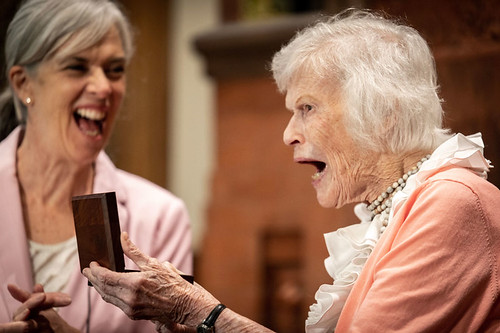
Following her husband's combat death in 1942, Patricia Warner signed up as an officer with the Office of Strategic Services, the precursor to the CIA.
On Tuesday, the Lincoln resident was honored for her service as a spy for two years during World War II.
U.S. Rep. Katherine Clark presented the Congressional Gold Medal to Warner, who said it was a welcome surprise to an exciting month: She just turned 98.
Warner was pretty covert about her duties overseas in Spain, but she did recall Tuesday coordinating with European resistance groups through Morse Code.
 According to Clark's office, the OSS was collectively honored in 2016 with a Congressional Gold Medal, but
Warner was unaware that she was eligible for the award. So with the help of Warner’s son, Clark secured the medal.
According to Clark's office, the OSS was collectively honored in 2016 with a Congressional Gold Medal, but
Warner was unaware that she was eligible for the award. So with the help of Warner’s son, Clark secured the medal.
Clark emphasized the important role servicewomen played in national security.
"They were good at their jobs and really surprised a lot of people at how effective they were at gathering information and being a part of the resistance," she said.
During the war, Warner says her main mission was to pose as a secretary while she used Morse Code to secretly pass on information to help American pilots avoid being shot down or get out from behind enemy lines.
Warner's son, Chris, added that his mother would schmooze German soldiers for information.
After the war, Warner earned a bachelor's degree from Barnard College in 1949, and a master's degree from Lesley College in 1985.
To read the complete article, see:
WWII Spy, 98, Is Presented With The Congressional Gold Medal
(https://www.wbur.org/news/2019/05/28/patricia-warner-lincoln-oss)
ISKOWITZ MEDAL DESIGN HONORS MICKEY MARCUS
Mel Wacks of the American Israel Numismatic Association passed along this announcement of a new medal designed by Joel Iskowitz. Thanks. -Editor

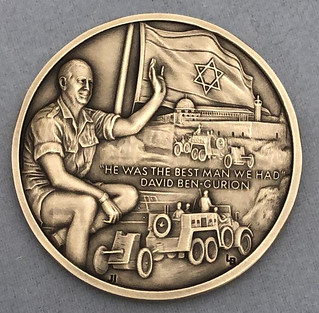
The American Israel Numismatic Association has issued art medals honoring Mickey Marcus, an American hero of Israel’s War of Independence. Only 120 2-inch bronze high relief medals have been minted, including just 10 Artist’s Proofs that are accompanied by illustrated certificates personally signed by the medal’s designer Joel Iskowitz, who has created over 50 designs for coins and medals issued by the U.S. Mint. The cost of the regular bronze medal is $50, and the Artist’s Proof is $85. Mention that you read about this in The E-Sylum, and you can take a 20% discount. To order, call 818-225-1348.
The obverse of the medal features a portrait of David Daniel "Mickey" Marcus as a 1924 graduate of West Point. During World War II, Marcus organized and commanded a Ranger Combat Training School, and later parachuted into Normandy on D-Day with the first wave of the 101st Airborne Division. In 1946, he was named chief of the Army's War Crimes Division in Washington, planning legal and security procedures for the Nuremberg Trials and the Tokyo War Crimes Tribunal.
On May 28, 1948 Marcus was appointed Aluf ("general") by David Ben-Gurion, and was given command of the Jerusalem front. Marcus built the "Burma Road to Jerusalem" - a makeshift winding road through difficult hill terrain (pictured on the medal’s reverse); it was opened to vehicles on June 10, breaking the siege of Jerusalem. Sadly, shortly after, Marcus was accidentally shot to death by a sentry, when he failed to give the password. Marcus’ story was told in the 1966 motion picture, “Cast a Giant Shadow,” starring Kirk Douglas.
For more information on the American Israel Numismatic Association, see:
http://www.theshekel.org/
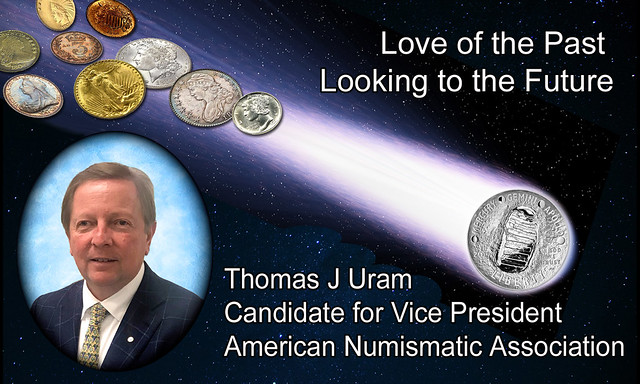
ENGELHARD WEST COAST SILVER BARS
Bullion bars are collectible, too. An article published by the AllEngelhard Society discusses bars produced by the Engelhard west coast recycling plant. -Editor

If you’re an Engelhard collector, you have surely come across either a 10oz or 100oz Engelhard silver ingot with a “W” prefix to the serial number. This “W” denotes Engelhard West, Inc.’s plant in Anaheim, California, which specialized in precious metals recycling, and operated from 1979 through 1980 to meet the silver demand driven by the Hunt Brother’s upward manipulation of the silver market. The plant was set up in Anaheim to allow a convenient industrial recycling location proximate to the huge Los Angeles metropolitan trade area.
While Engelhard West recycled and processed many metals during it’s short tenure, total silver ingot fabrication was tremendous during this two-year period. An estimated 18,000 10oz ingots were fabricated, totaling 180,000 troy ounces; and approximately 25,000 100oz ingots were fabricated, totaling 2,500,000 troy ounces. Both the 10oz (8th series) and 100oz (7th series) “W” prefix ingots from Engelhard West, Inc. were crude in comparison to Engelhard’s 10oz 7th series and 100oz 6th series “P” prefix varieties, which incidentally, were produced simultaneously at Engelhard’s New Jersey plant. It is rumored that these “W” bars were fabricated for industry and were exact on weight, but lacking in beauty and refinement, and as such were ideal for industrial repurposing, jewelry, etc. Not surprisingly, many of these ingots were utilized/melted within short time after they were produced.
Today, Engelhard 10oz “W” ingots command a healthy 50% +/-premium over spot price, and a 25% +/- premium over their 7th series “P” counter-parts. Conversely, Engelhard 100oz “W” ingots, due to their large size and thus high price point, currently bring only about 10% over spot price, making them a true collector’s bargain for a 35+ year old poured Engelhard ingot with great history and few survivors! What’s not to like about that!
To read the complete article, see:
THE ENGELHARD WEST COAST RECYCLING FACILITY
(https://allengelhard.com/wp-content/uploads/2015/03/AGWire-ENGELHARD-WEST-5-7-15-2.pdf)
ASBURY PARK 1882 GOLD CERTIFICATES
Last week we discussed a group of rare U.S. gold certificates that are the subject of a lawsuit. Four of the notes sold in a recent Heritage auction. Reader Ron Haller-Williams (our "Googler-in-Chief") kindly located the auction listings so we could illustrate the notes here. Thanks! -Editor
Lot 17165: Fr. 1215d $500 1882 Gold Certificate
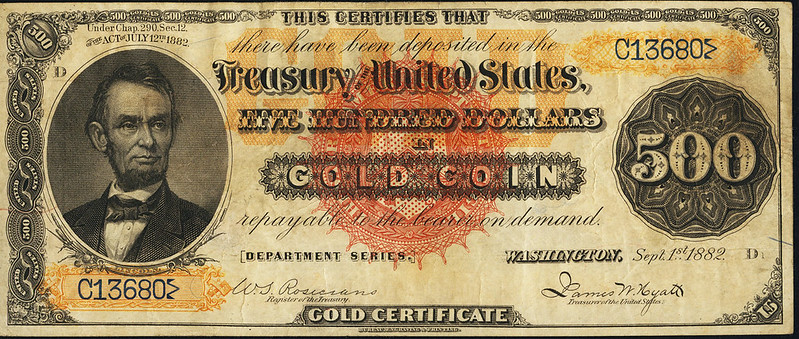
Fr. 1215d $500 1882 Gold Certificate PCGS Very Fine 35.
After an even two dozen years of cataloging spectacular type notes for Currency Auctions of America and now for Heritage Auctions, one becomes
somewhat jaded to important items. We have sold more different Friedberg numbers than any other auction house and are missing only a very few from a
complete set. That said, this note, although tied in rarity with several other unique pieces, is the most memorable item this cataloger has seen.
Prior to the appearance of this piece last Spring along with the three Thousands that follow, only a single example of Fr. 1215d was known to exist,
and that note is permanently impounded in the collection of the Federal Reserve.
When we handled the Cookson Collection of Gold Certificates in 1999, we auctioned the $50 Fr. 1191 and the $100 Fr. 1204 with the Large Red Spiked Seal. At that time, we all speculated that no collector would ever get to own a $500 Gold with the Large Red Spiked Seal. That note was near the top of everyone's "never likely to turn up" list. Here it is. The note is in a comment-free PCGS Very Fine 35 holder. It is broadly margined with fully fresh ink colors and not a hint of a defect save for the light traces of circulation commensurate with the assigned grade.
When this cataloger and another Heritage representative picked up this consignment last Spring, we entered the small town bank's safe deposit area knowing what four notes we were about to see. Knowing what's there and actually seeing it are two very different things. This note is transfixing.
To read the complete lot description, see:
Fr. 1215d $500 1882 Gold
Certificate PCGS Very Fine 35.. ...
(https://currency.ha.com/itm/gold-certificates/fr-1215d-500-1882-gold-certificate-pcgs-very-fine-35/a/3526-17165.s)
Lot 17166: Fr. 1218d $1000 1882 Gold Certificate
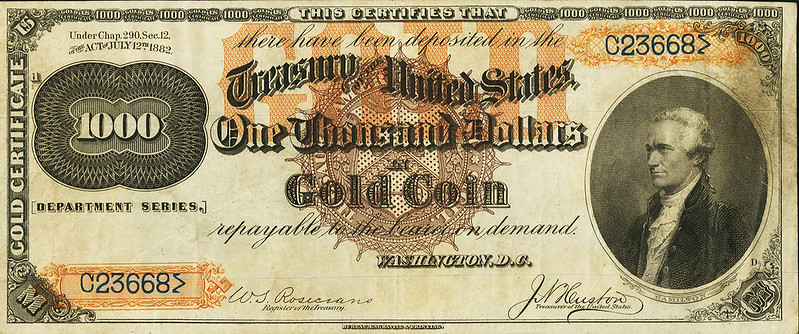
Fr. 1218d $1000 1882 Gold Certificate PCGS Very Fine 35.
The first of the three incredible 1882 Thousands to have turned up along with the Red Seal Five Hundred last Spring. This Large Brown Spiked Seal
note now resides in a comment-free PCGS VF 35 holder. In our opinion, the grade is exactly correct. Prior to the appearance of this note, only three
examples were known, two of which are permanently impounded in government hands.
One is held by the Federal Reserve Bank of San Francisco where it was examined in 1993 and graded Fine. The second was delivered by the Treasury Department to the Smithsonian Institution in 1978, and has been graded as Very Fine. The third and finest of the three known is an About New, that was initially owned by Albert Grinnell and sold on March 10, 1945 as lot 566 by Barney Bluestone. That note has changed hands twice privately in the last 15 years. CAA/Heritage sold it on January 7, 2000 for a then record price of $935,000 and it was re-sold at the 2006 Memphis auction for $1,092,500. It has been off the market since that time. The currently offered note is now the second piece in private hands.
To read the complete lot description, see:
Fr. 1218d
$1000 1882 Gold Certificate PCGS Very Fine 35.. ...
(https://currency.ha.com/itm/large-size/gold-certificates/fr-1218d-1000-1882-gold-certificate-pcgs-very-fine-35/a/3526-17166.s)
Lot 17167: Fr. 1218e $1000 1882 Gold Certificate

The final note of the previously three known presents an interesting mystery. It was the plate note in the early editions of the Friedberg catalog and bears serial number C24623. No one knows the origin of the photograph and it appears to have never been seen by any living collector or dealer. At the Memphis show this year, Heritage distributed a "Wanted" poster with a picture of that note offering a nice grade small size $500 to anyone coming forward with the current whereabouts of the Friedberg plate note. Arthur Friedberg, the son of the original author, Robert Friedberg, has no idea where his dad obtained the photo. None of the various currency population report owners have any idea of its whereabouts and a collector friend with close ties to all the major government institutions has been unable to locate the note or any information about it. No one has come forward with even a hint of its whereabouts in the past seven months and we feel quite confident in referring to this present offering as "Unique In Private Hands."
To read the complete lot description, see:
Fr.
1218e $1000 1882 Gold Certificate PCGS Apparent Very Fine 35.. ...
(https://currency.ha.com/itm/large-size/gold-certificates/fr-1218e-1000-1882-gold-certificate-pcgs-apparent-very-fine-35/a/3526-17167.s)
Lot 17268: Fr. 1218f $1000 1882 Gold Certificate
To read the complete lot description, see:
Fr. 1218f
$1000 1882 Gold Certificate PCGS Very Fine 35.. ...
(https://currency.ha.com/itm/large-size/gold-certificates/fr-1218f-1000-1882-gold-certificate-pcgs-very-fine-35/a/3526-17168.s)
To save space I didn't illustrate the fourth note. The Asbury Park Press article said there were originally 13 gold certificates in the group - what were the other 9, and where are they now? -Editor
To read the earlier E-Sylum article, see:
ASBURY PARK GOLD CERTIFICATES DISPUTED
(https://www.coinbooks.org/v22/esylum_v22n21a27.html)
THE NEWEST EURO NOTES
Pablo Hoffman forwarded this May 28, 2019 New York Times Morning Briefing item about the new Euro banknotes. Thanks. -Editor
 The
newest euro notes
The
newest euro notes
There’s more than meets the eye in the new bank notes circulating in Europe as of today.
The 100- and 200-euro bills are the last of the “Europa” designs to go into use since 2013. The 5, 10, 20 and 50 preceded them.
The newest bills have extra security features, only a few of which the European Central Bank has disclosed.
For one, a hologram shows a portrait of Europa as well as small € symbols that move around and become clearer under direct light. (In Greek mythology, Europa was a nymph seduced by Zeus posing as a white bull. Her image was taken from a vase in the Louvre.)
There may be other features — like infrared watermarks — readable only by machines.
To read the complete article (scroll down), see:
(https://www.nytimes.com/2019/05/28/briefing/european-parliament-macron-austria.html)

LOOSE CHANGE: JUNE 2, 2019
Here are some additional items in the media this week that may be of interest. -Editor
Spotlight on the Royal Mint
Lou Golino wrote this overview of the Royal Mint for the GovMint.com site. -Editor
 Coinage in Great Britain dates to the second century BC when Celtic tribes first introduced coins to the region. During the Roman rule of Britain,
the Romans established mints all over the area, including in London, but that ended with the end of Roman rule. No coins were made in Britain for the
next 200 years, until the English kingdoms emerged in 650 AD.
Coinage in Great Britain dates to the second century BC when Celtic tribes first introduced coins to the region. During the Roman rule of Britain,
the Romans established mints all over the area, including in London, but that ended with the end of Roman rule. No coins were made in Britain for the
next 200 years, until the English kingdoms emerged in 650 AD.
At that time as many as 30 mints were set up in Britain, including in London, and control of those mints alternated depending on which tribe won battles for control of the land.
Alfred the Great regained London in 866 AD from a warring tribe and then started issuing silver pennies that featured his portrait. It is with those events that the Royal Mint dates its origin as a continuously operating minting facility. For the following 800 years the mint operated within the Tower of London and then moved to the Royal Mint court, where it remained until the 1960s.
In 1968, as the UK was preparing to introduce decimal coinage, Queen Elizabeth II opened the mint’s current facility in South Wales at a plant located in Llantrisant. It employs over 900 people.
To read the complete article, see:
A Spotlight on the Royal Mint:
Sovereigns, Britannias, and Beyond
(https://www.govmint.com/coin-authority/post/a-spotlight-on-the-royal-mint-sovereigns-britannias-and-beyond-/)
The Origin of the Dollar Symbol
Dick Hanscom passed along this BBC News article on the origin of the dollar symbol. Thanks. -Editor

It’s shorthand for the American dream and all the consumerism and commodification that comes with it, signifying at once sunny aspiration, splashy greed and rampant capitalism. It’s been co-opted by pop culture (think Ke$ha when she first started out, or any number of fast-fashion t-shirts) and borrowed by artists (Salvador Dali fashioned a moustache from it, Andy Warhol rendered it in acrylic and silkscreen, creating an iconic body of work that itself now sells for $$$).
In 1520, the Kingdom of Bohemia began minting coins using silver from a mine in Joachimsthal – which roughly translates from German into English as Joachim’s valley. Logically if unimaginatively, the coin was dubbed the joachimsthaler, which was then shortened to thaler, the word that proceeded to spread around the world. It was the Dutch variation, the daler, that made its way across the Atlantic in the pockets and on the tongues of early immigrants, and today’s American-English pronunciation of the word dollar retains its echoes.
Despite the currency’s relative youthfulness, however, there is no straightforward answer to the question of where the dollar sign sprang from. Nobody seems to have sat down to design it, and its form still fluctuates – sometimes it has two lines through it, increasingly just the one. Not that there aren’t plenty of competing hypotheses.
To read the complete article, see:
The Curious Origins of the Dollar Symbol
(http://www.bbc.com/capital/story/20190528-the-curious-origin-of-the-symbol)
How Scotland Changed the Face of British banknotes
This BBC News article is a great overview of Scottish banknote innovations, including portraits, color printing, commemorative issues, and polymer notes. -Editor
 Scotland's contribution stretches back to 1695, when the Bank of Scotland became the
second successful bank in Europe (after the Bank of England a year earlier) to issue notes.
Scotland's contribution stretches back to 1695, when the Bank of Scotland became the
second successful bank in Europe (after the Bank of England a year earlier) to issue notes.
The bank enjoyed a monopoly in banking north of the border for 21 years. But it was Royal Bank of Scotland which was to prove the more innovative after its foundation in 1727.
It wasted no time in issuing the first British note to make a main feature of a face.
The portrait belonged to the king at the time, George II.
Ruth Reed, head of archives at RBS, explains: "Nobody else had really done that before. Notes had had printed writing and some kind of design - squiggly lines and things.
"But by putting a portrait on, it was a very clever move for anti-forgery because humans are so good at distinguishing tiny little differences in faces."
To read the complete article, see:
How Scotland changed the face of British banknotes
(https://www.bbc.com/news/uk-scotland-scotland-business-47401363)
SPRUCE TIP MONEY OF SKAGWAY, ALASKA,
Not "tip money" as in what you give a waiter, but "spruce tip" money - an odd item of local barter worth money in remote Skagway, Alaska. Thanks to Dick Hanscom of Fairbanks for sending this BBC News article. -Editor
 In May 2016, a year after moving his family to Skagway, Alaska, John Sasfai walked into Skagway Brewing Co. with his
wife, Aelinn, and ordered four pints of Spruce Tip Blonde Ale. But instead of pulling out his wallet, the guide for Klondike Tours put a 4lb sack of
spruce tips on the bar to pay his tab.
In May 2016, a year after moving his family to Skagway, Alaska, John Sasfai walked into Skagway Brewing Co. with his
wife, Aelinn, and ordered four pints of Spruce Tip Blonde Ale. But instead of pulling out his wallet, the guide for Klondike Tours put a 4lb sack of
spruce tips on the bar to pay his tab.
That’s because in this town, the bounty he foraged from trees near Klondike Gold Rush National Historical Park serves as a currency.
This village, with a year-round population just shy of 1,000, is notably remote – it’s about 100 miles north of Juneau and 800 miles south-east of Anchorage. And though stampeders established Skagway during the late-19th-Century gold rush, these days the nuggets of value are plucked from the forest, not panned or mined. While spruce tips – the buds that develop on the ends of spruce tree branches – are only good for cash at Skagway Brewing Co., bartering with spruce tips for food, firewood or coffee (which are delivered by barge once a week) is not uncommon.
Alaskan spruce-tip dealings began with the Tlingit tribe, who brewed the Vitamin C-rich tips into tea long before the arrival of British explorers. But Captain James Cook, who visited Alaska in the late 1770s, famously concocted a distinctive spruce-tip beer to help prevent scurvy among his sailors. The spruce tips are only tender enough to harvest for a week or two every year in spring, and though they’re salutary as ingredients in potables, spices and sauces, their antimicrobial quality also makes them popular in hand creams, salves and bug-bite ointments.
Because there’s no commercial agricultural economy in Alaska, harvesting spruce tips is as close as people can get to living off the land for profit, Hasskamp told me. During the summer high season, Skagway welcomes some 10,000 daily cruise passengers who come, in part, to savour various spruce tip products such as the Spruce Tip Blonde Ale and spruce tip ice cream.
Until 2016, the going rate for a pound of spruce tips at the brewery was $4, or a pint of beer. After examining state liquor laws, Healy determined the brewery couldn’t legally offer beer as compensation, so in 2017, it switched over to a cash-for-spruce system and upped the per-pound rate to $5. Most people will still spend that money directly on beer anyway, Clifford said, and the newly expanded brewing facilities will help the brewery meet the uptick in demand for Spruce Tip Blonde Ale.
To read the complete article, see:
(http://www.bbc.com/travel/story/20190530-the-alaska-town-where-money-grows-on-trees)

